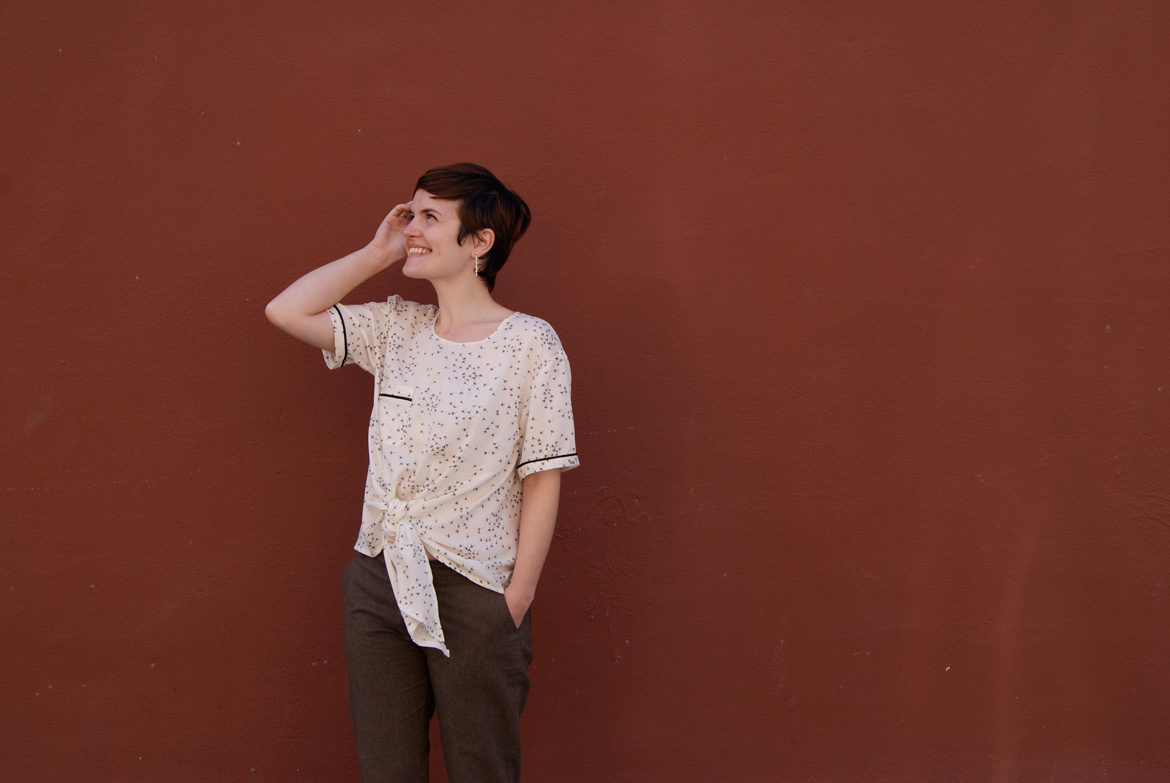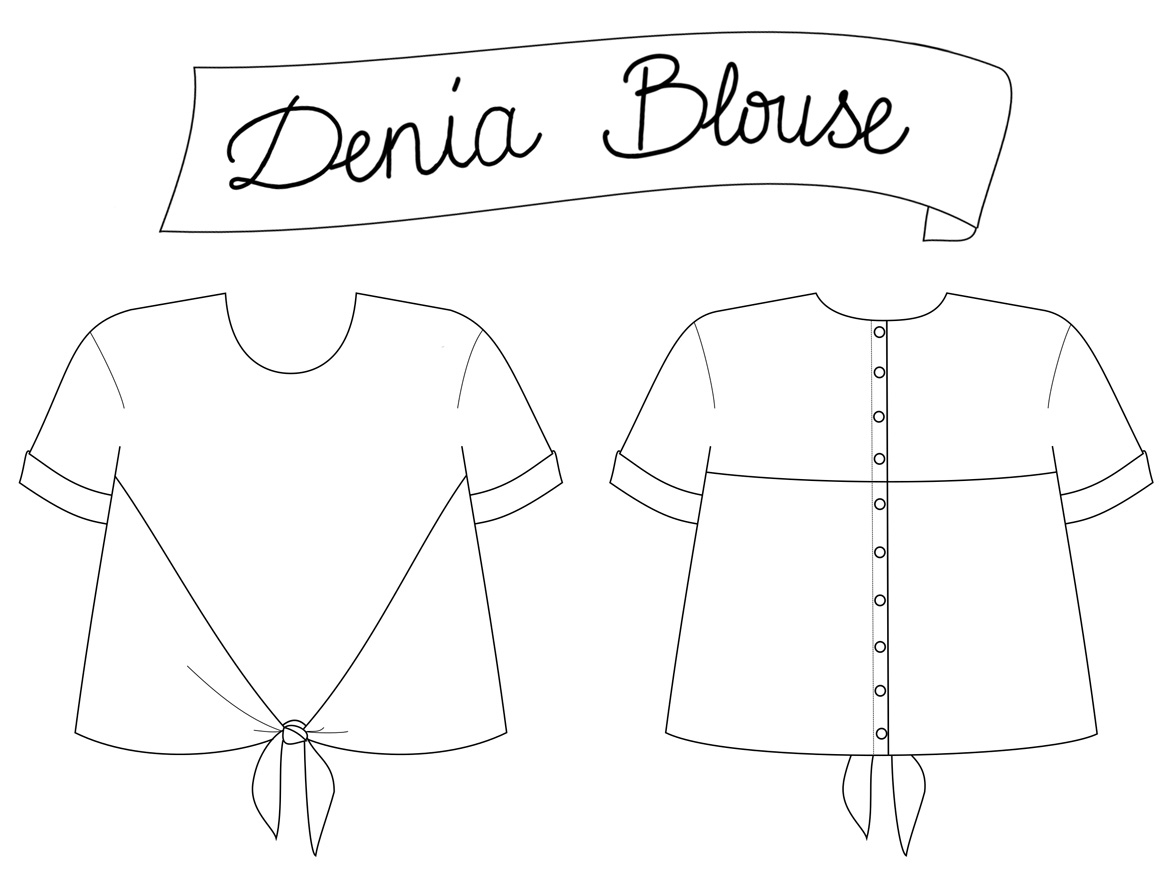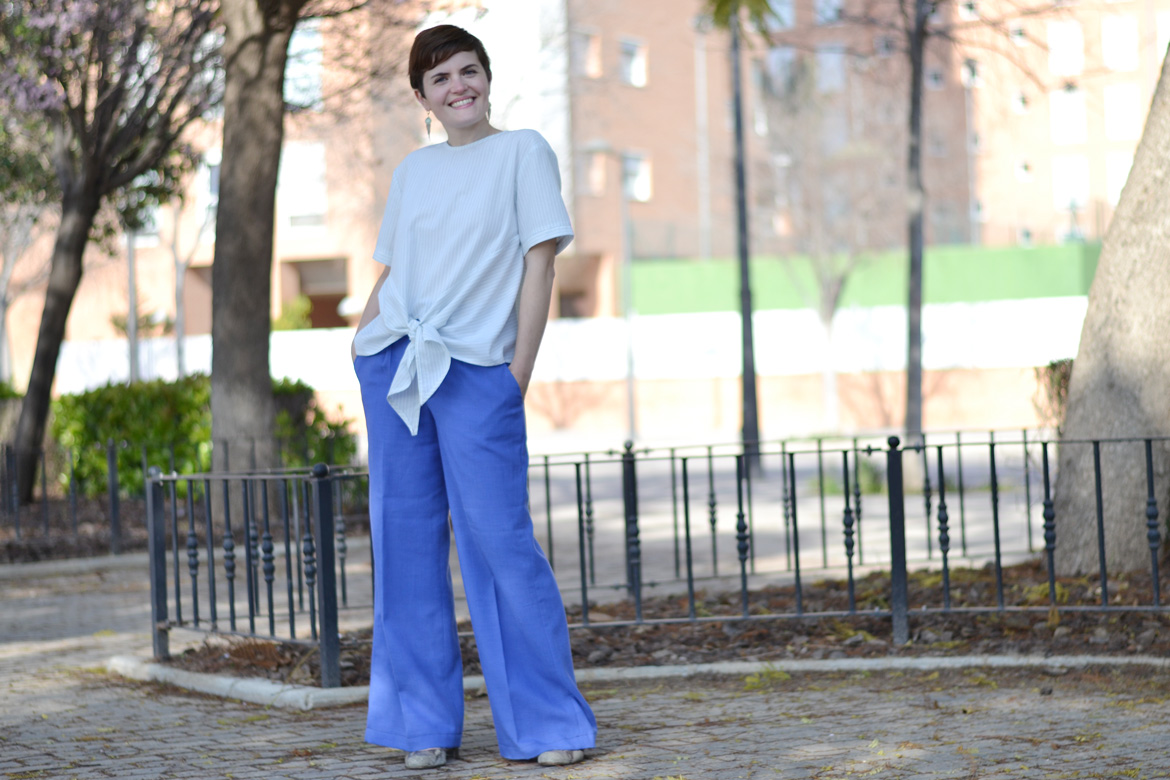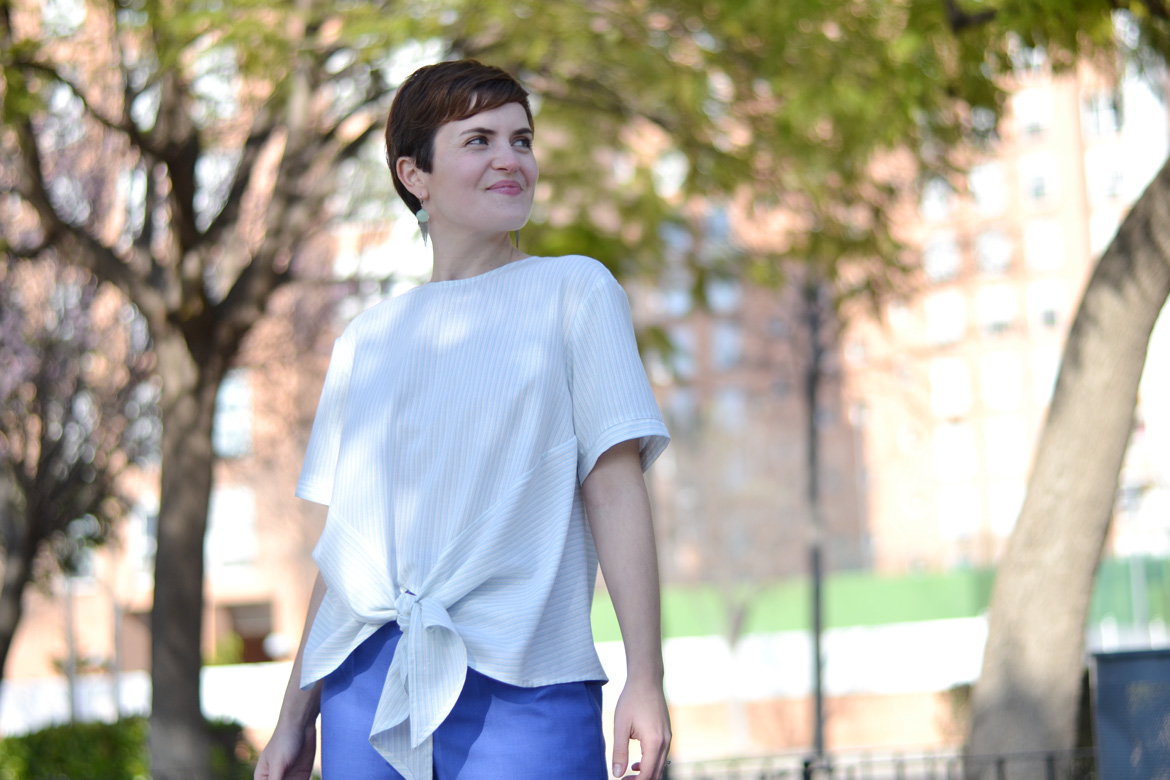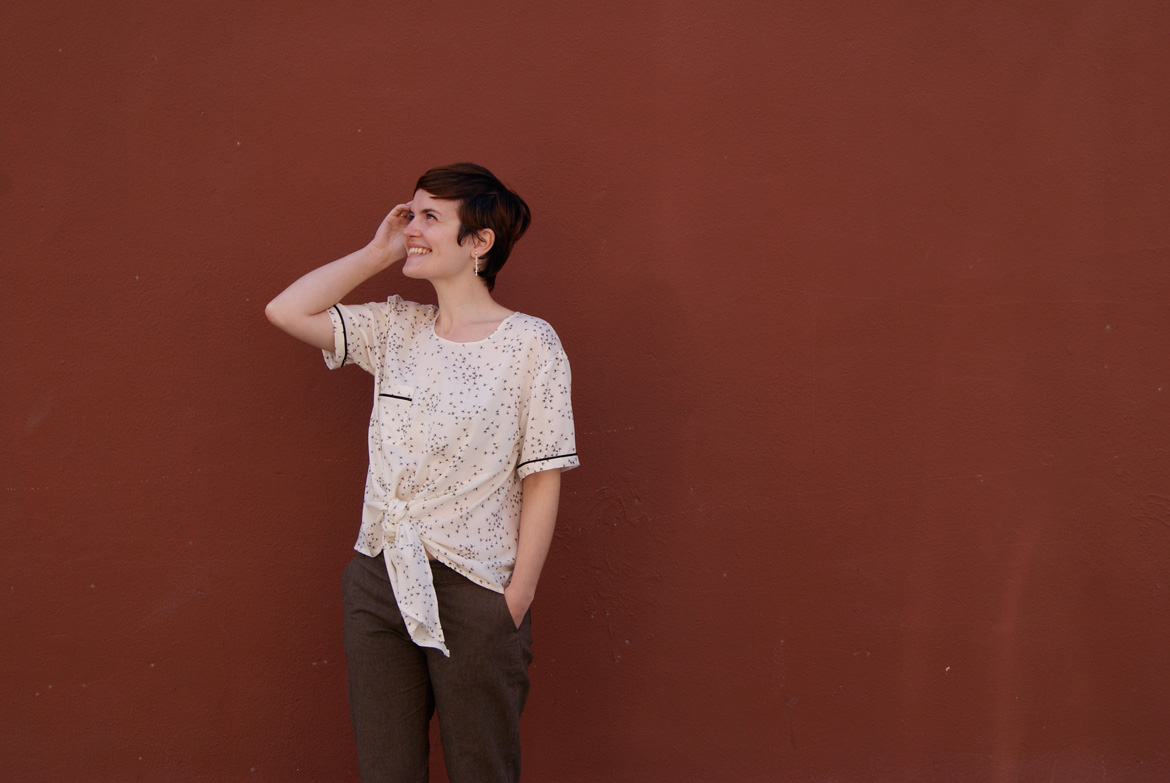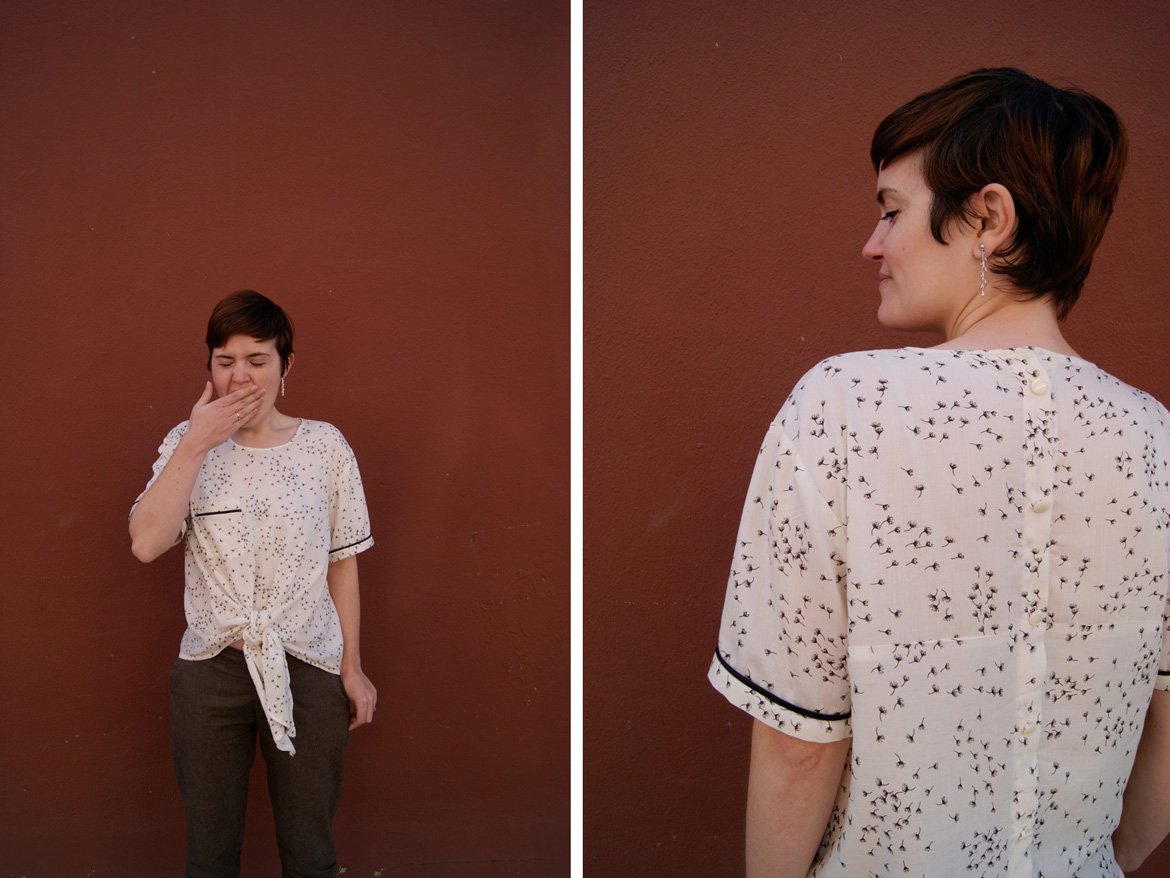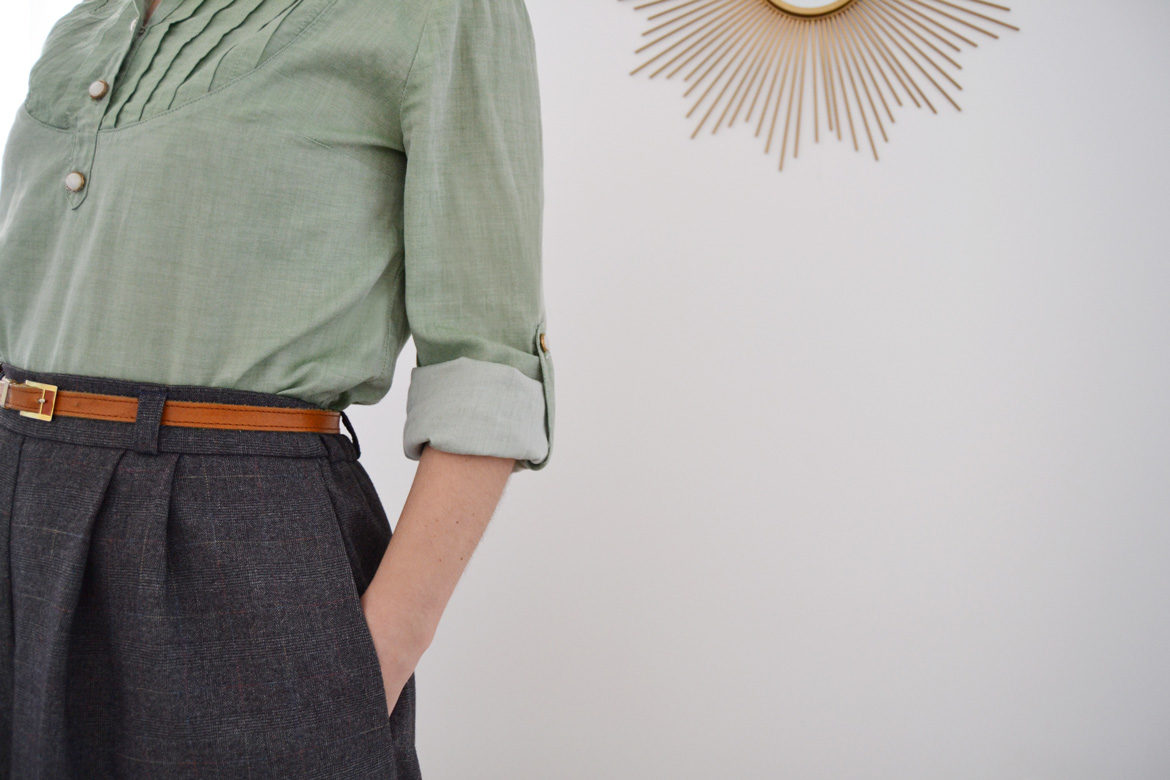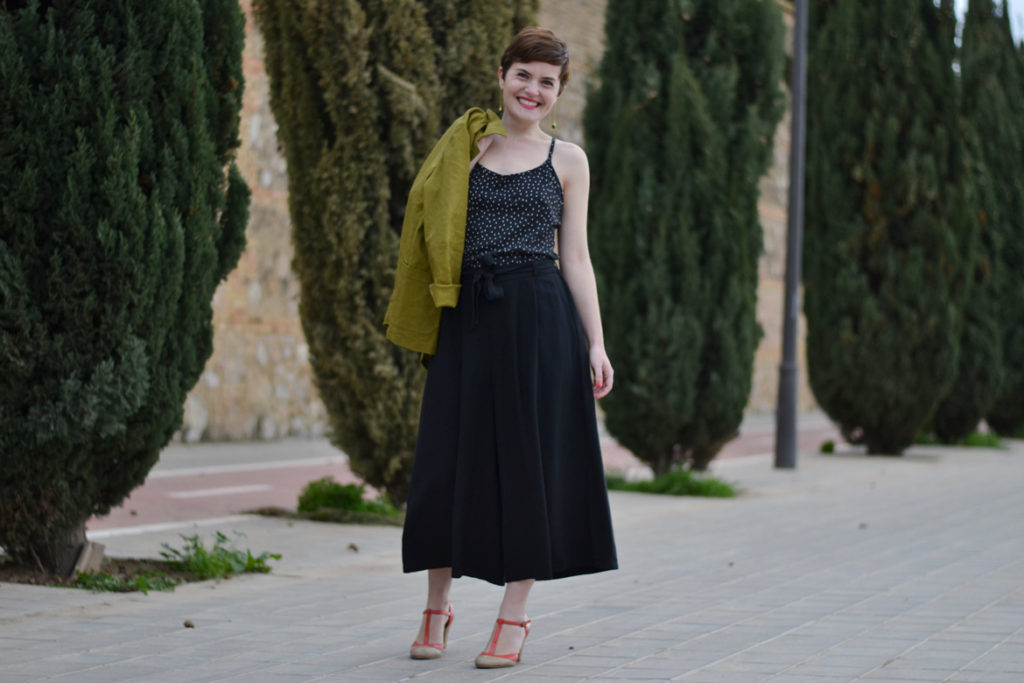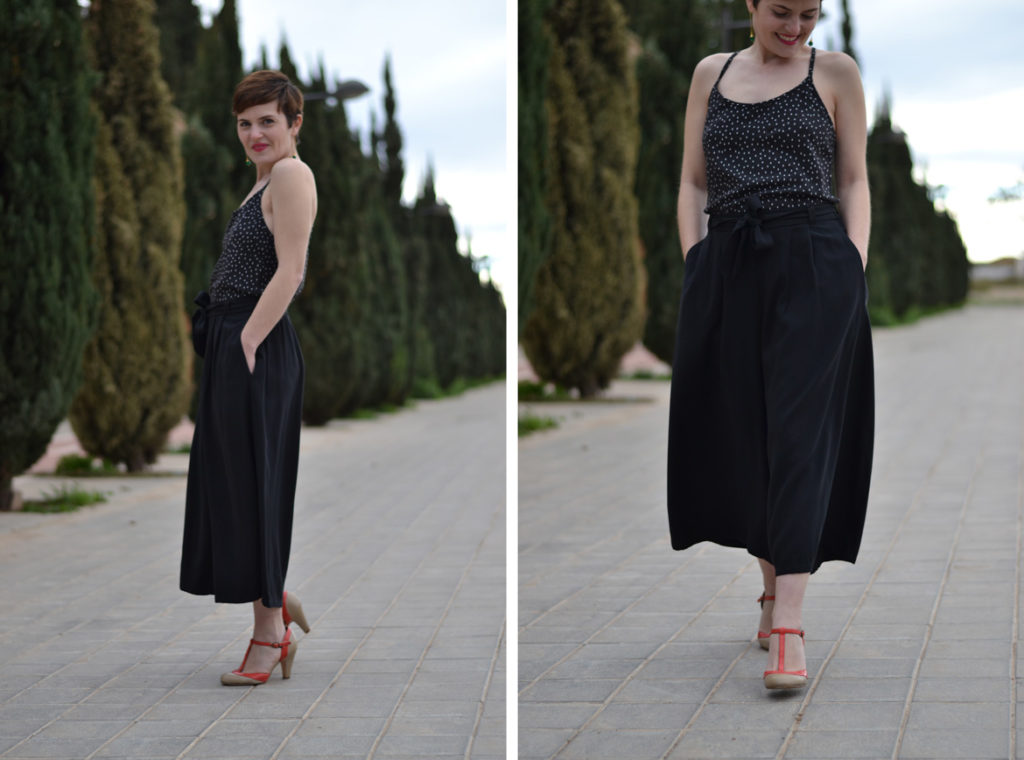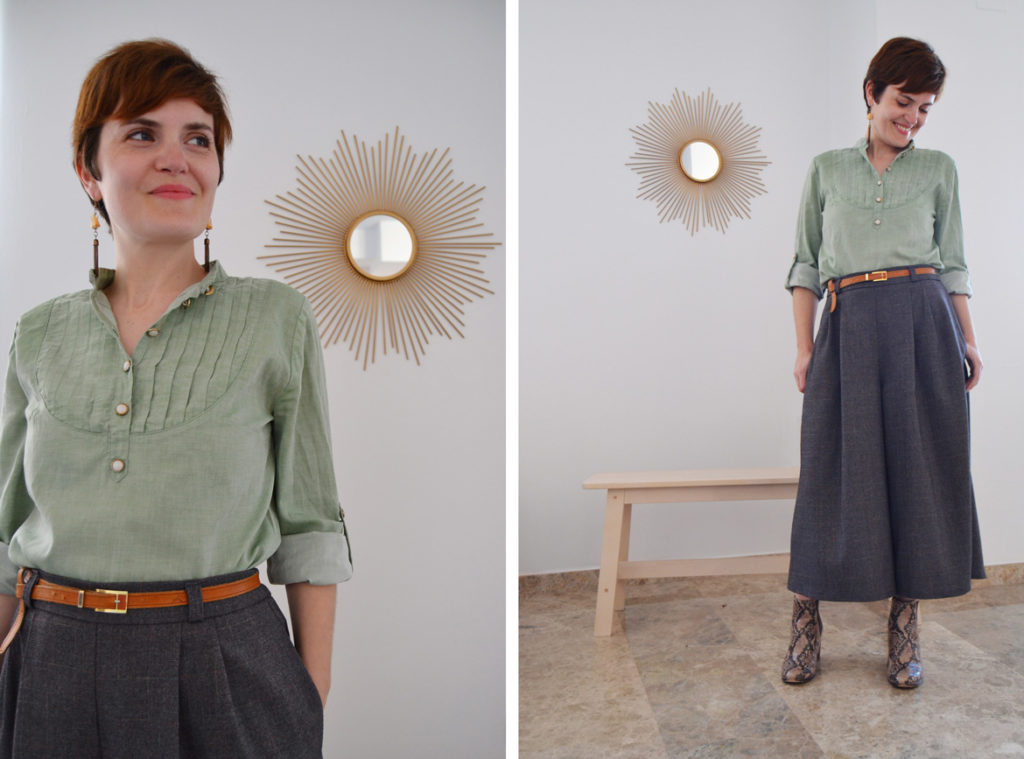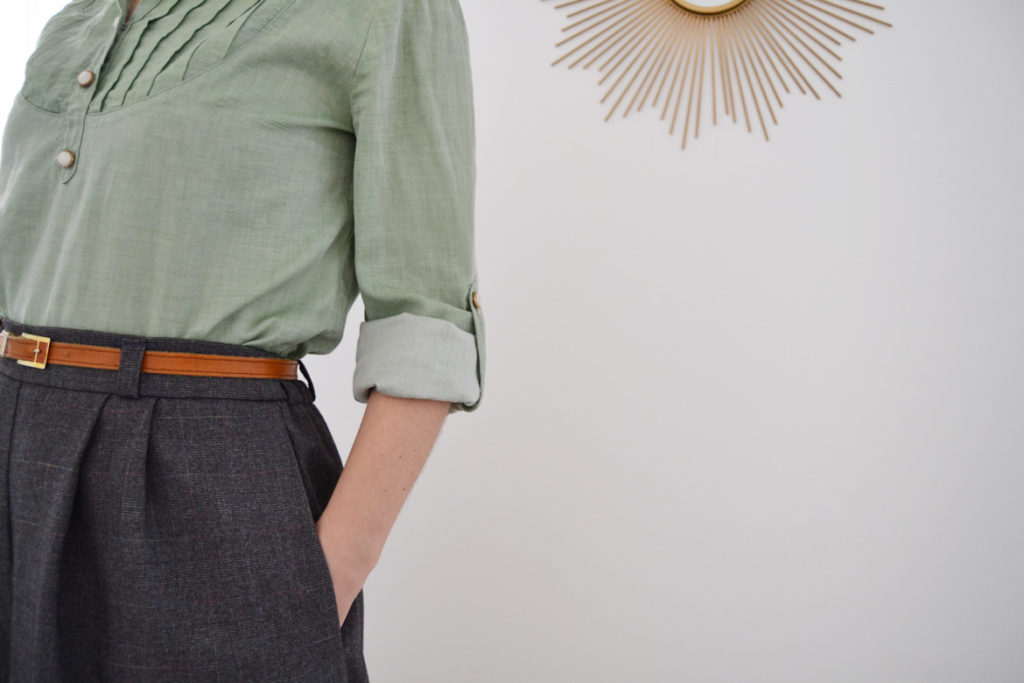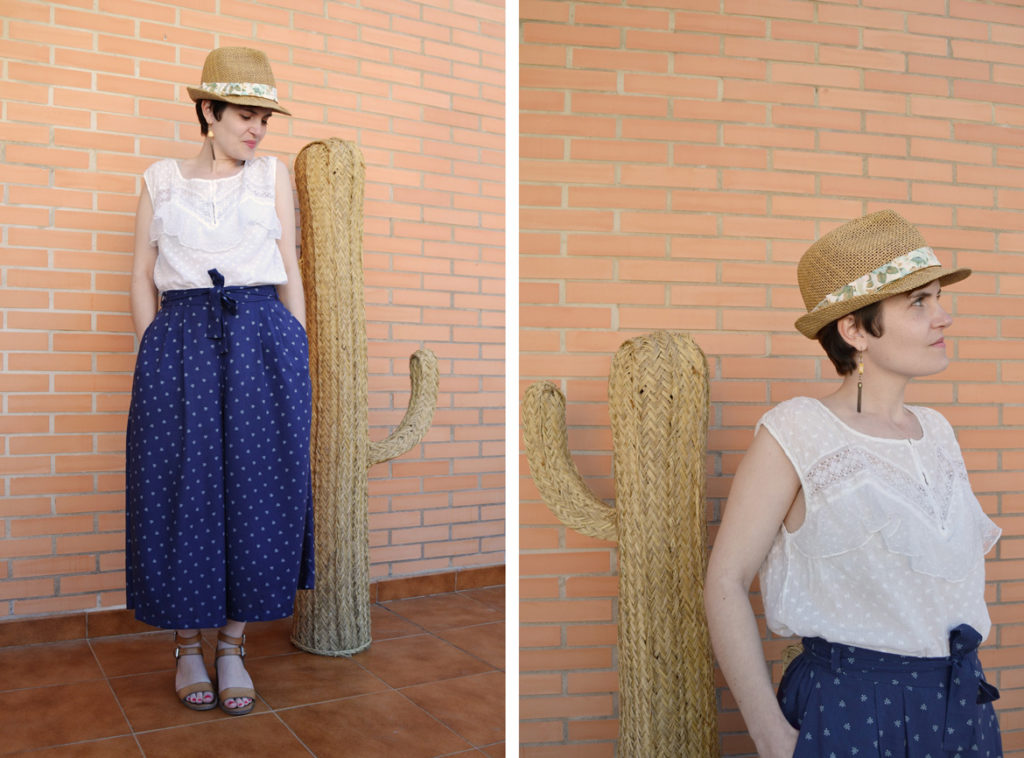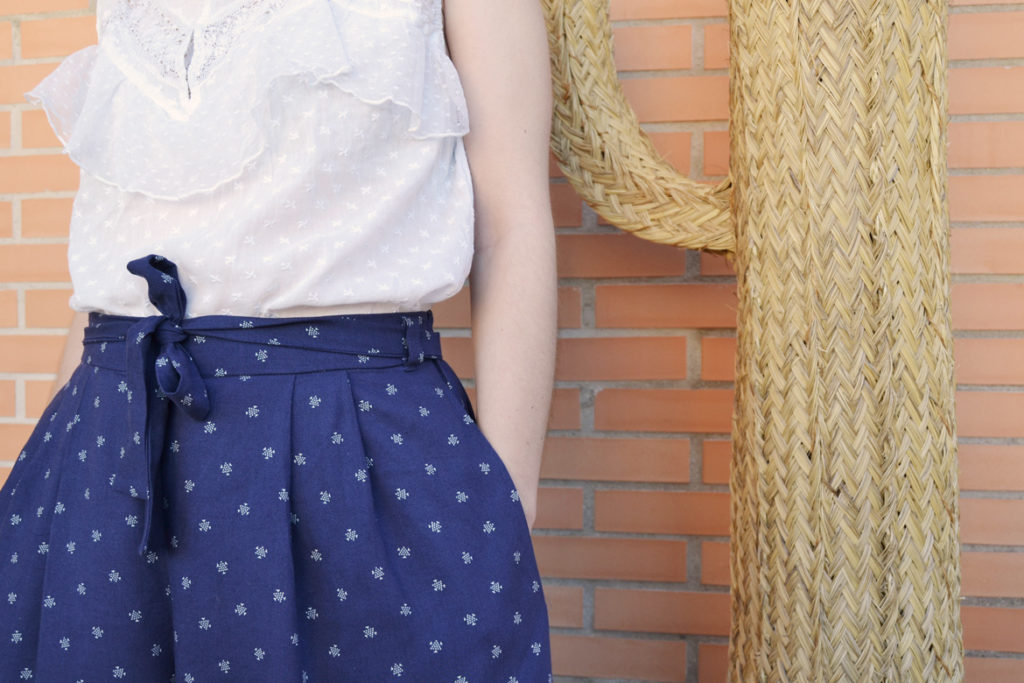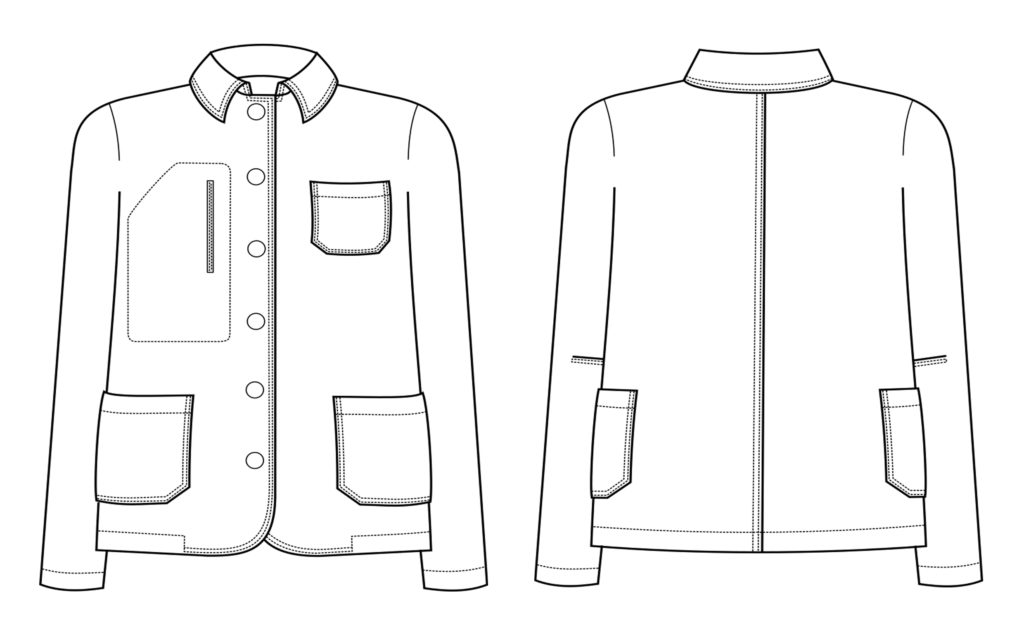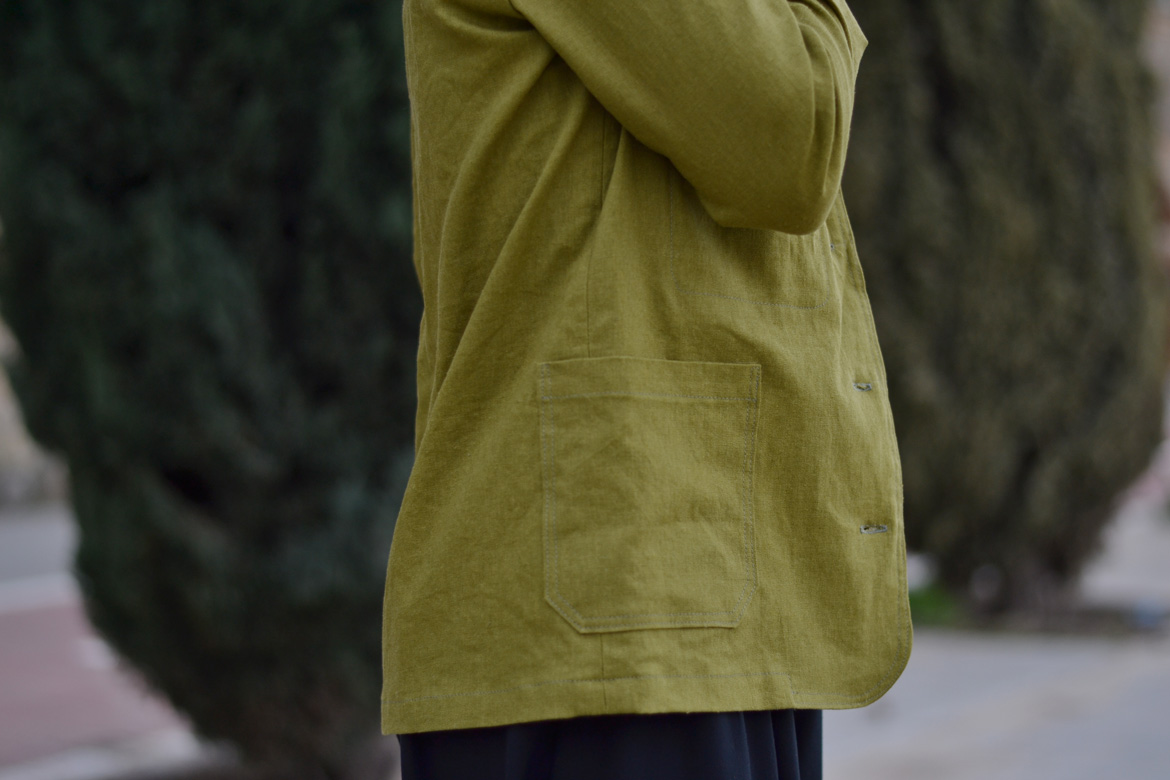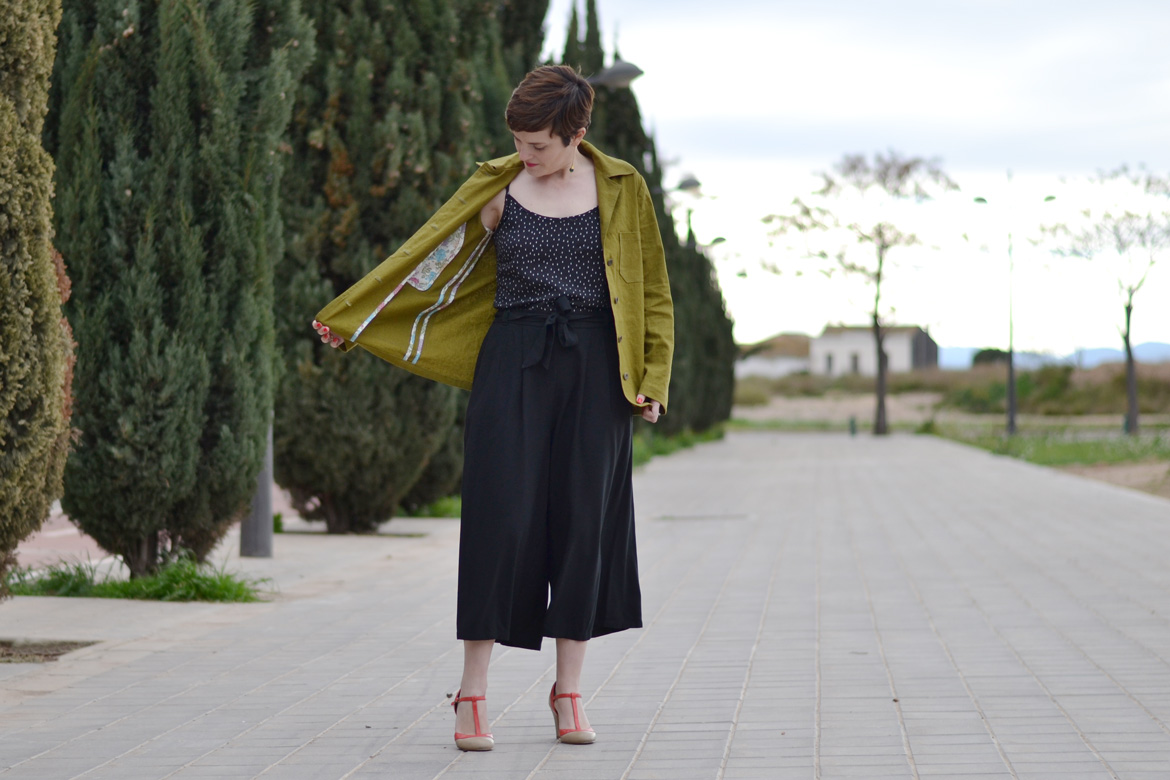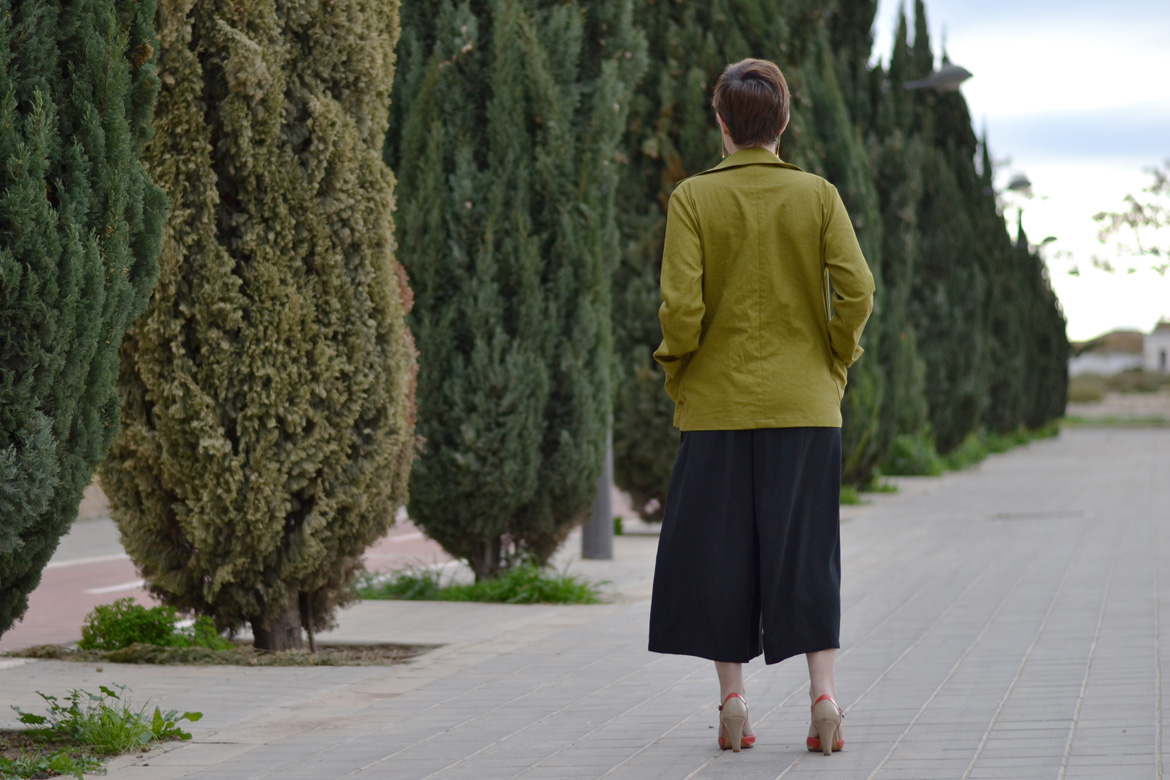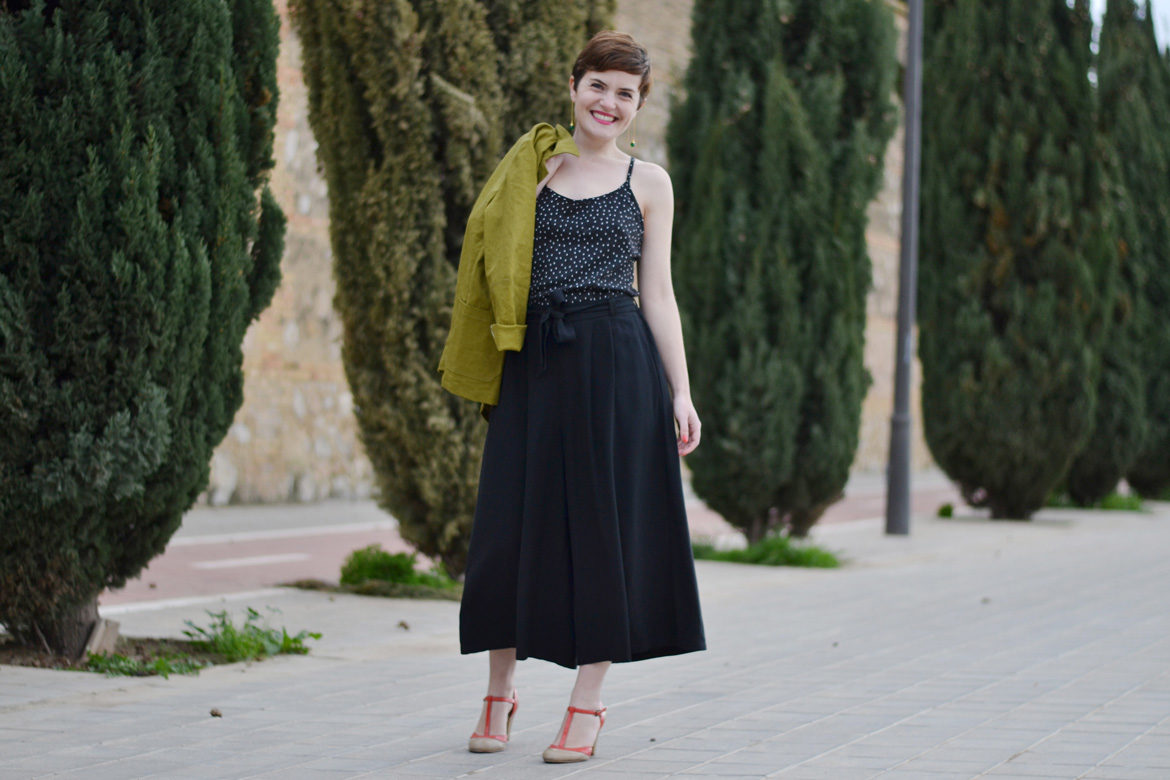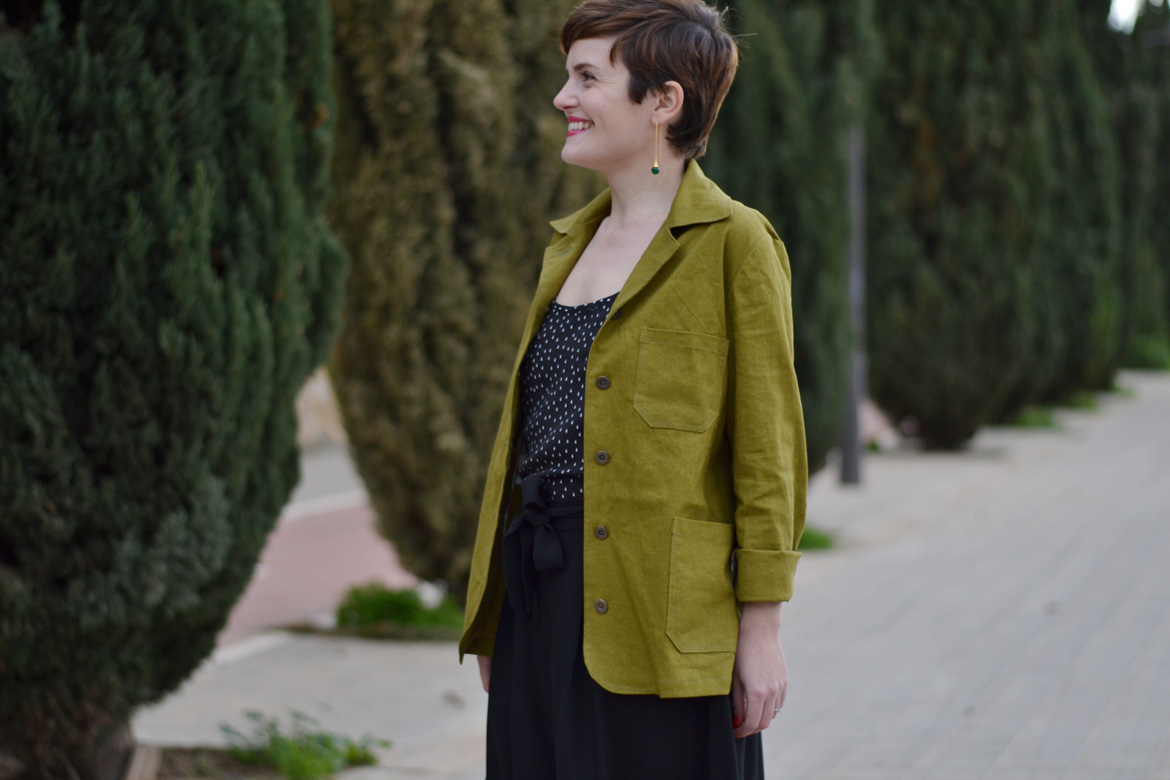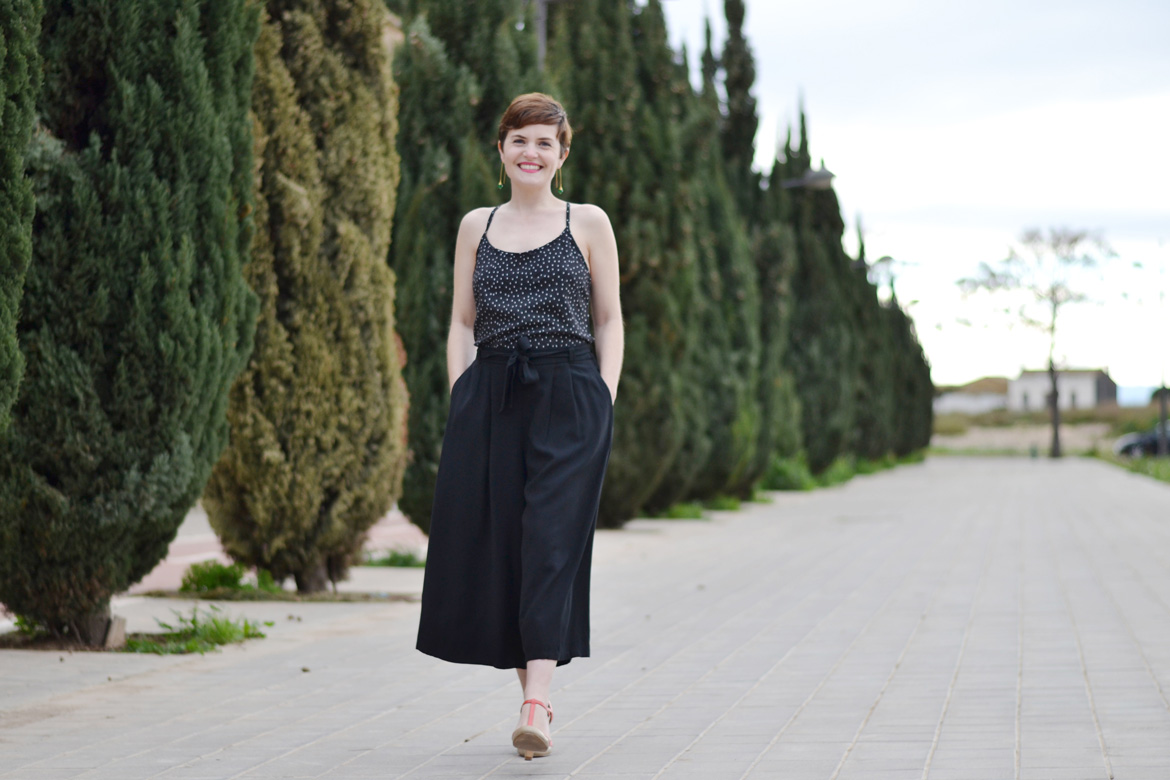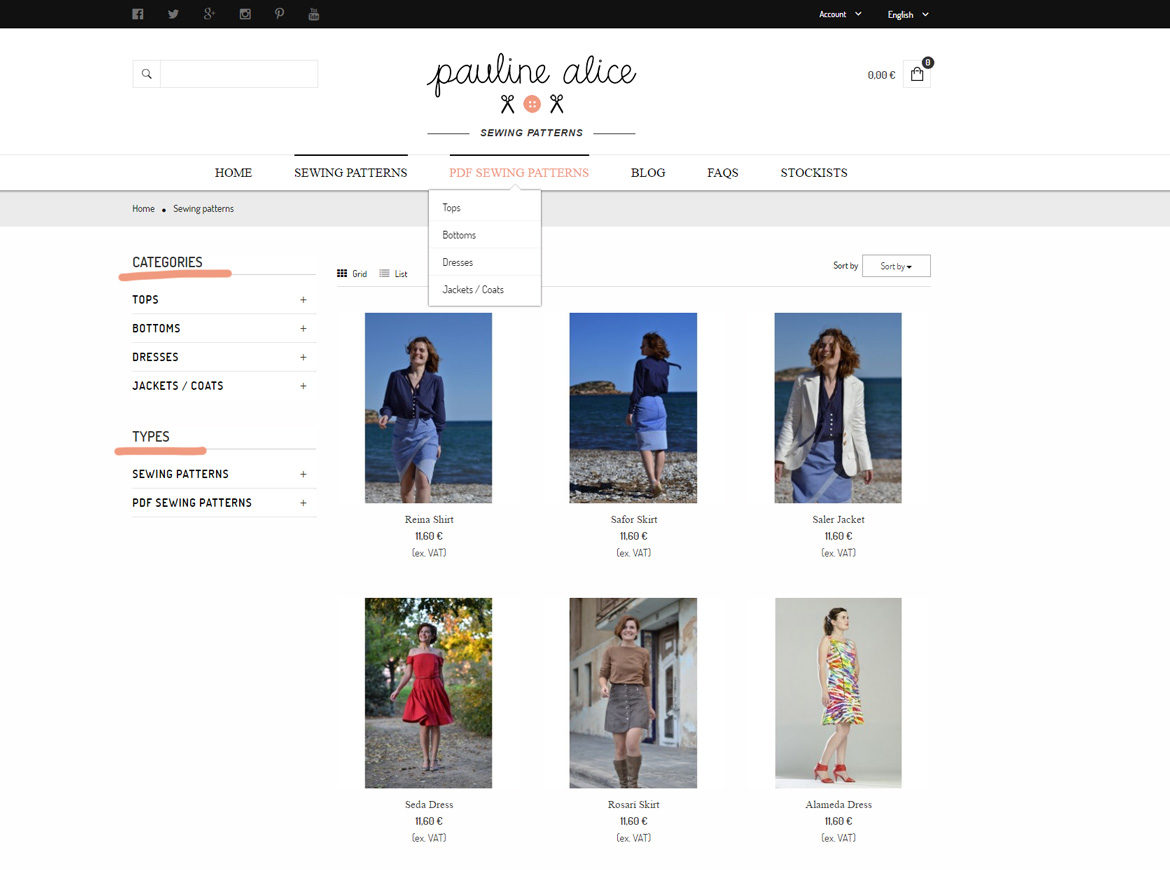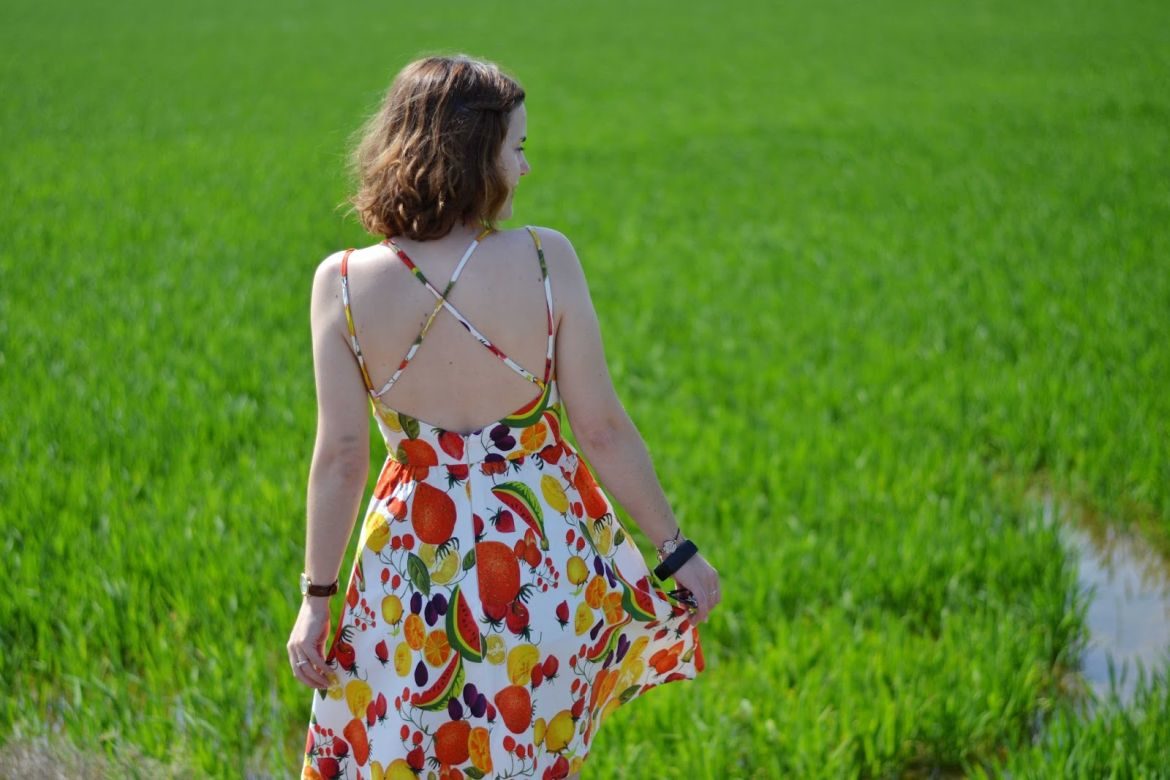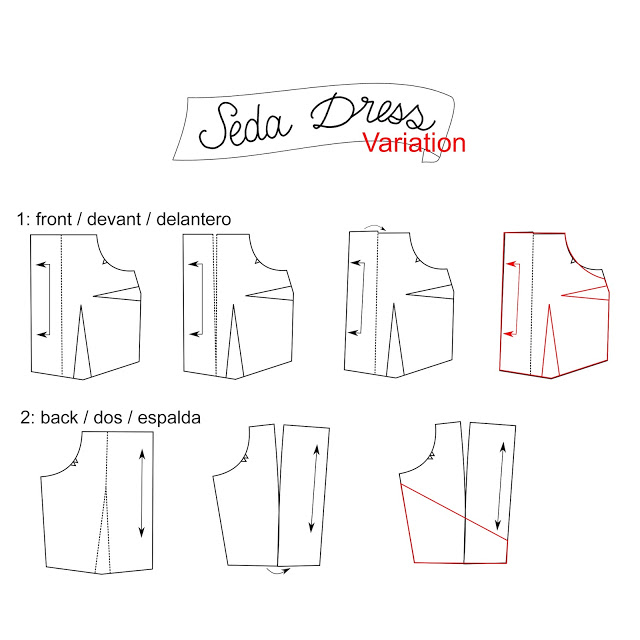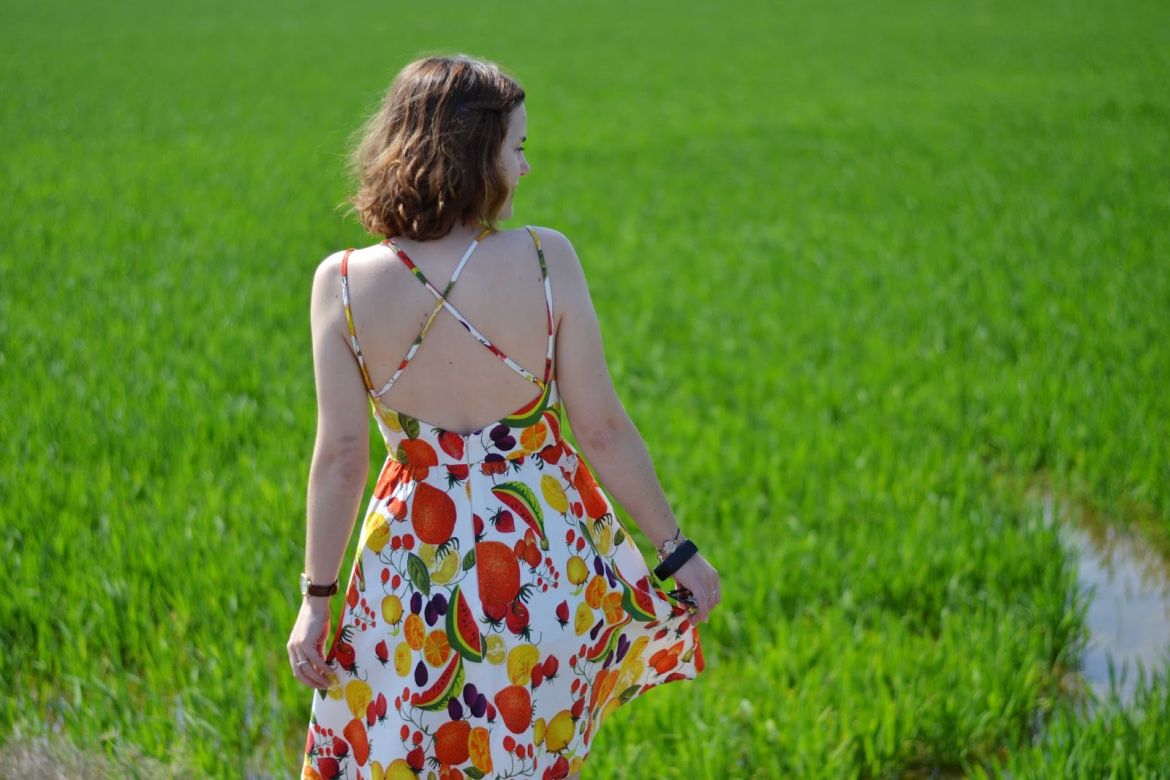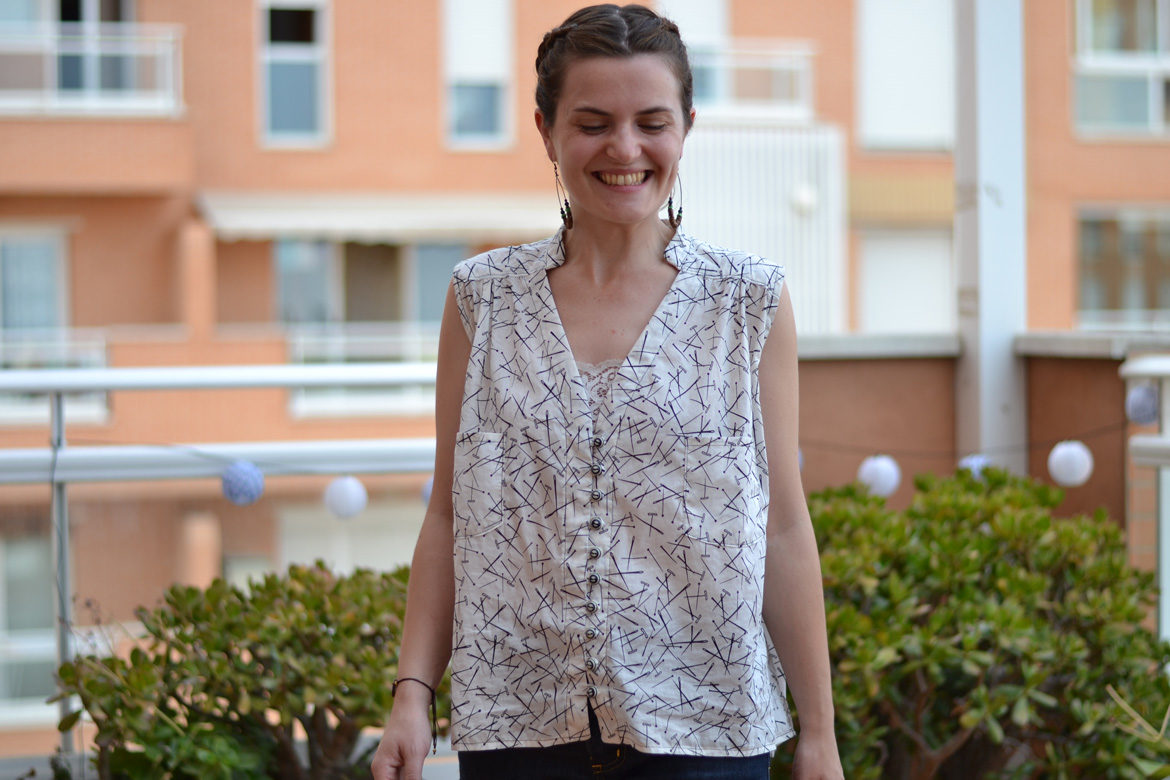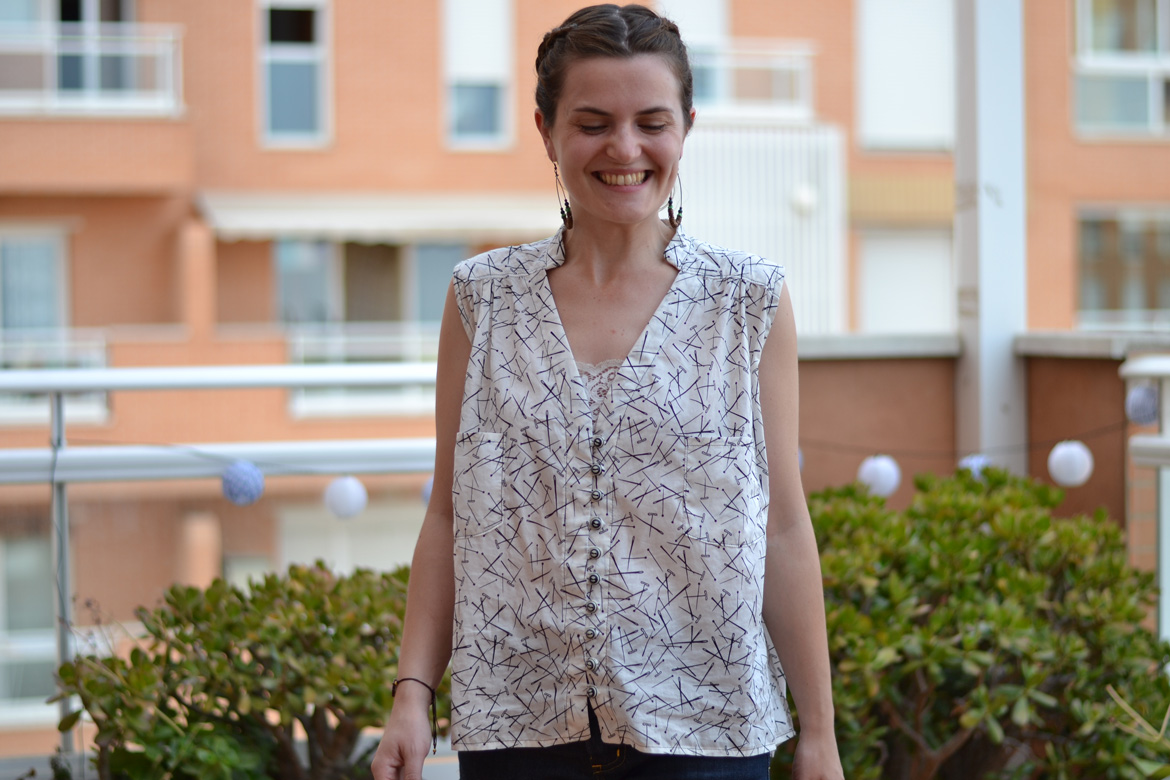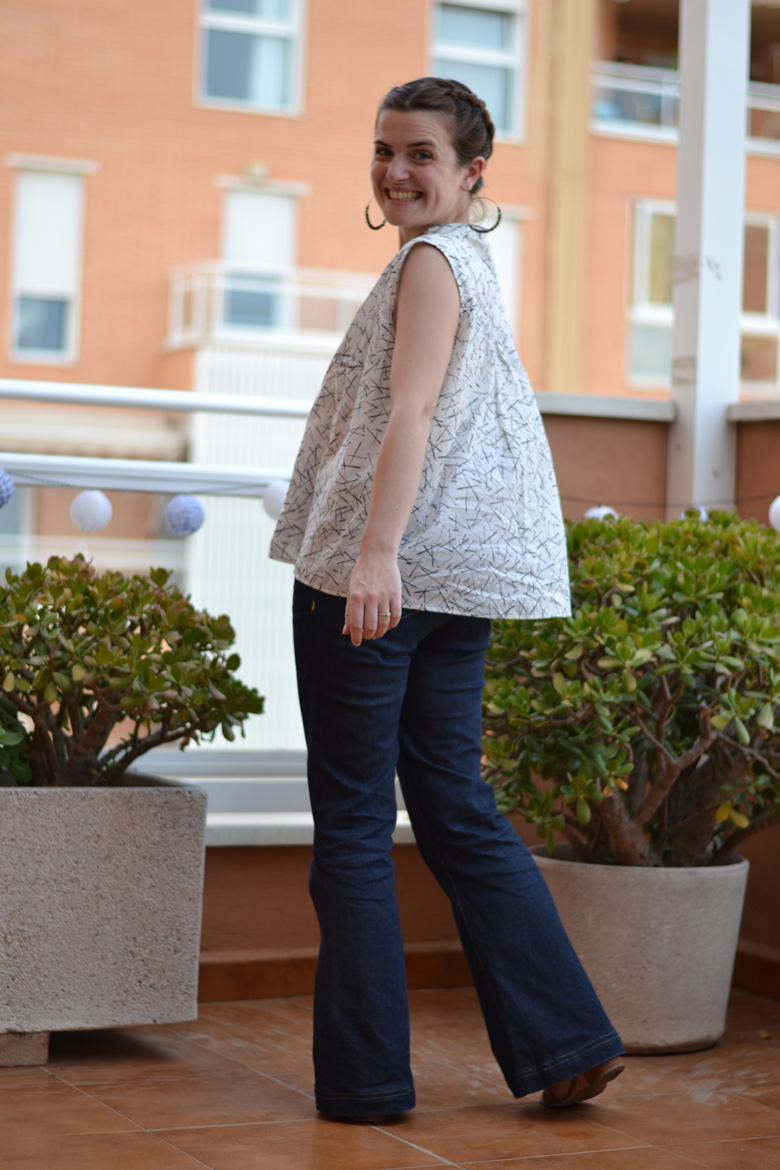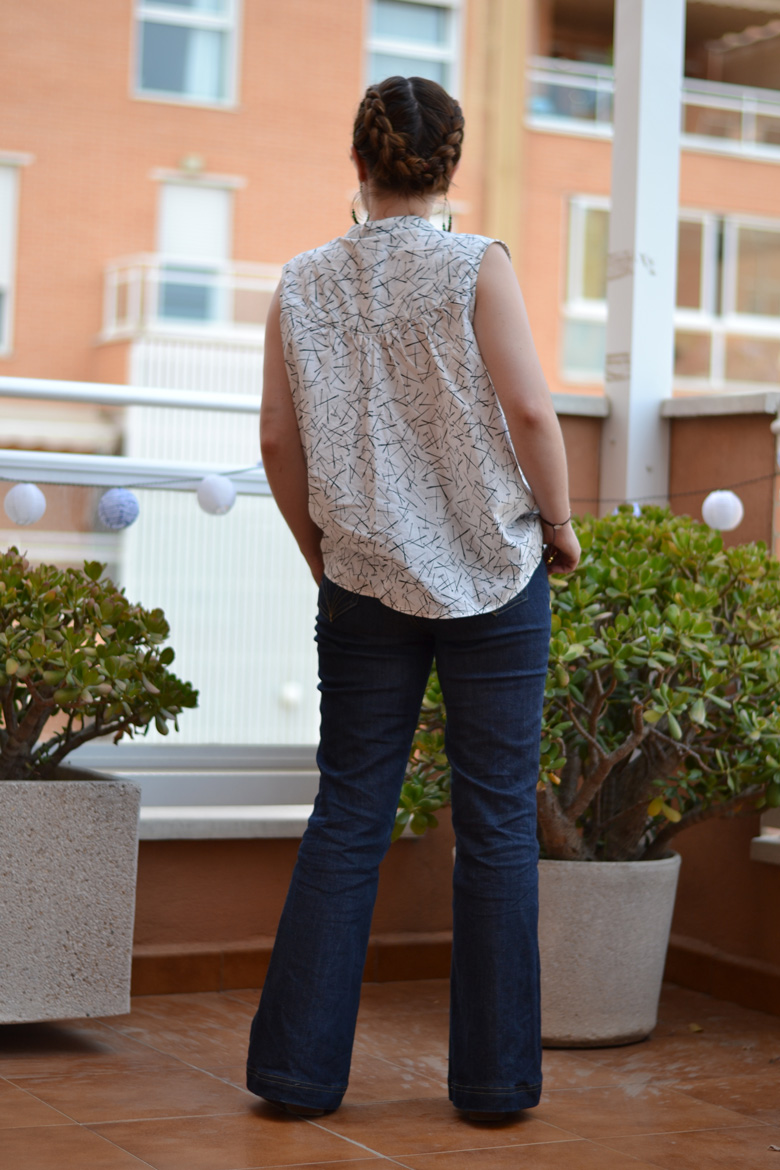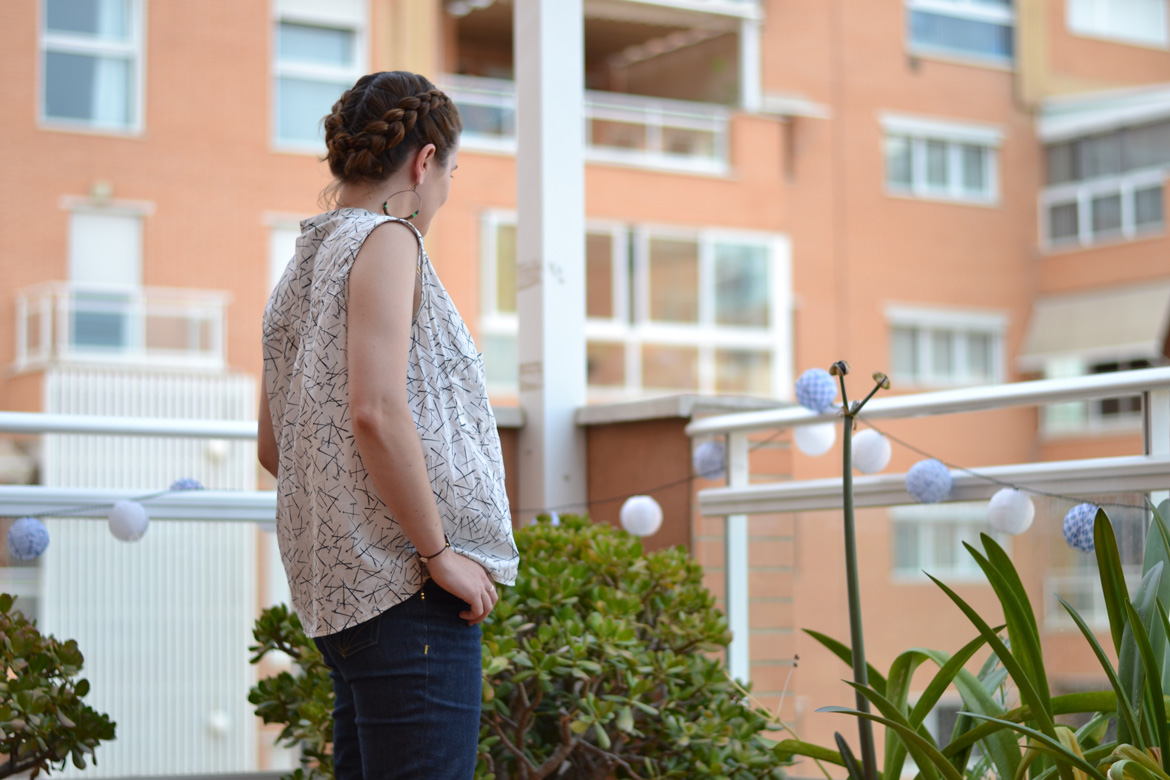In the same way as the post about fabrics inspiration for Lliria, I introduce you some fabrics inspiration for your Mirambell skirt. The Mirambell skirt is a high waisted pleated skirt with shaped pockets. The recommended fabrics are lightweight woven fabric such as cotton, linen, rayon, silk, crepe, light gabardine or wool, chambray, …
CLASSIC
1/ Unbleached linen from Cousette.
2/ Deep blue chambray from Amandine Cha.
3/ Grey herringbone cotton from Tissustory.
GRAPHIC
1/ Exotic printed viscose from Henry Henriette.
2/ Viscose Moonstone from Atelier Brunette.
3/ Poplin pink panther from Anna Ka bazaar.
DENIM
1/ Striped Tencel Madison from Cousette.
2/ Denim Etendard from Amandine Cha.
3/ Denim chambray from Amandine Cha.
So, I hope these inspirations give you some ideas for your Mirambell skirt. I will show you my fall version very soon!

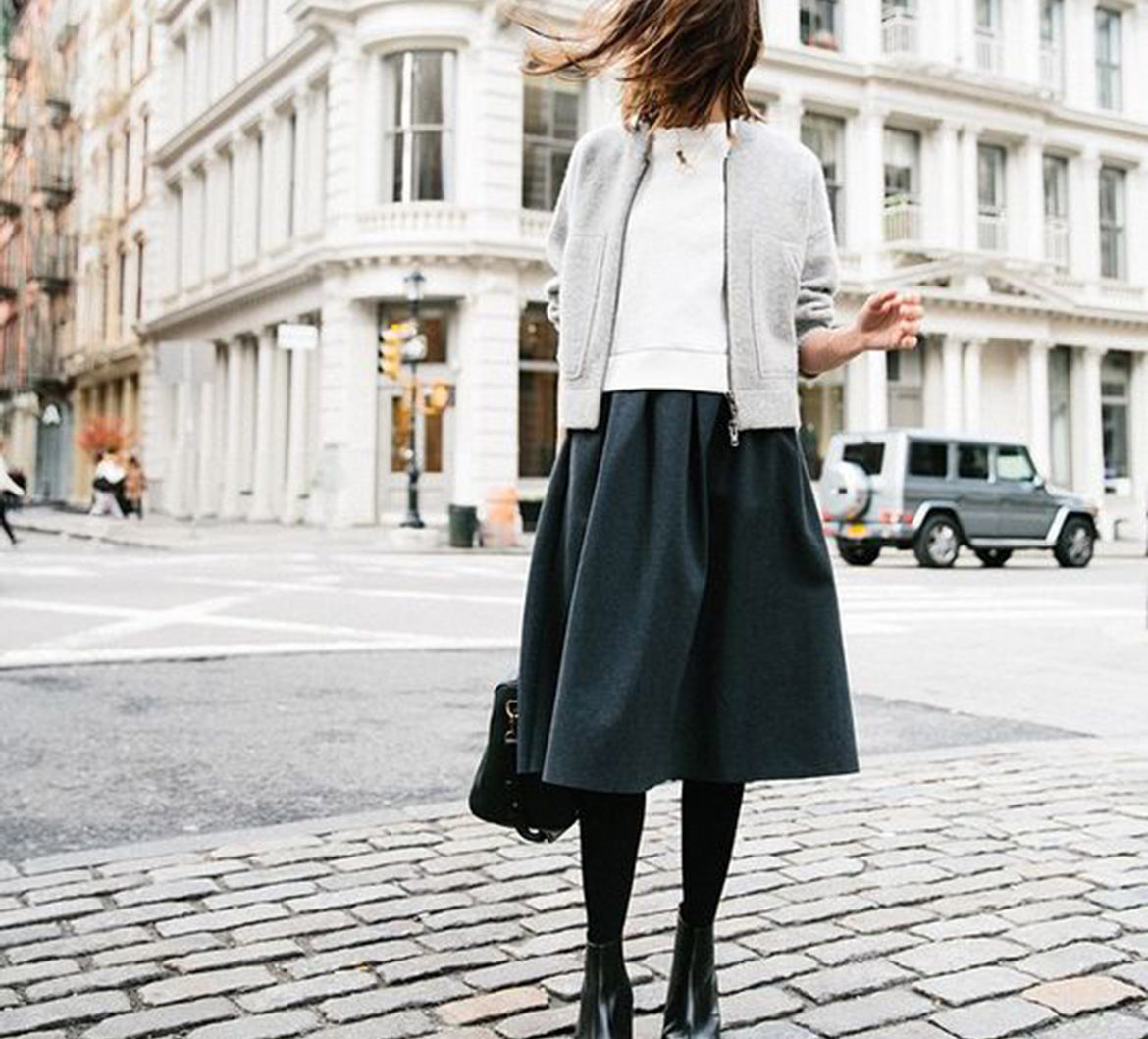
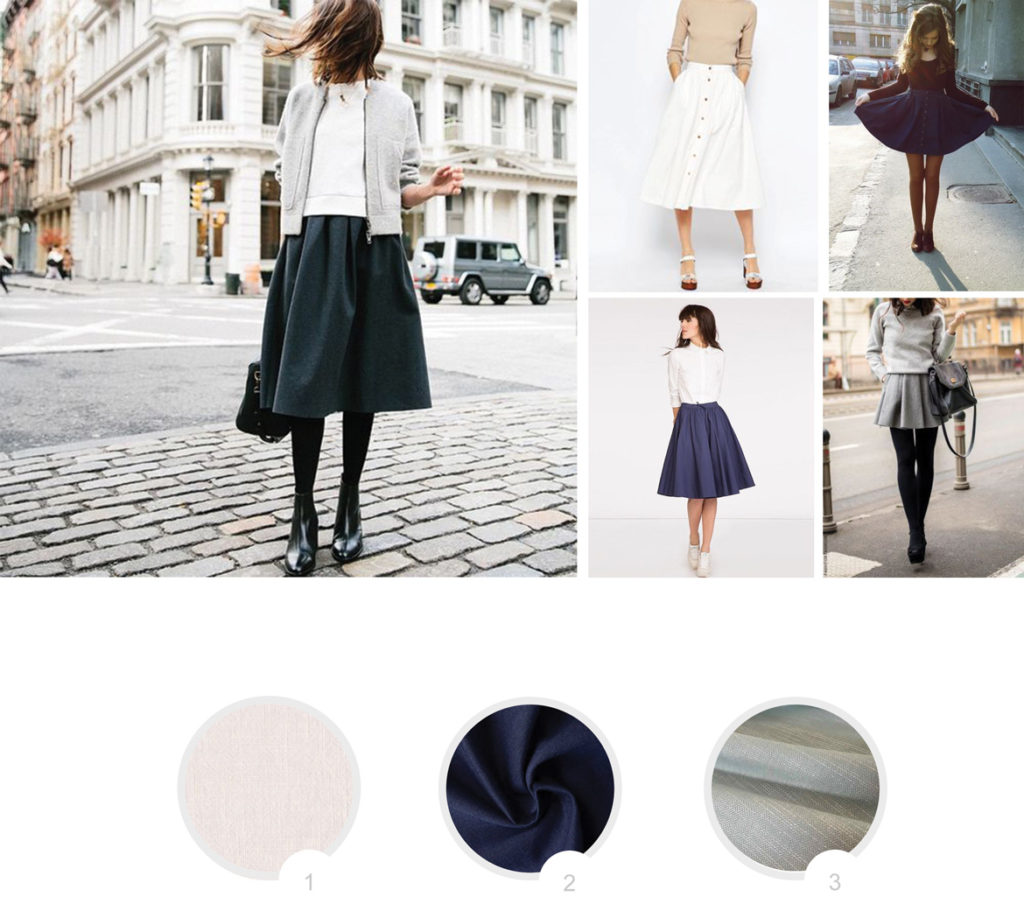
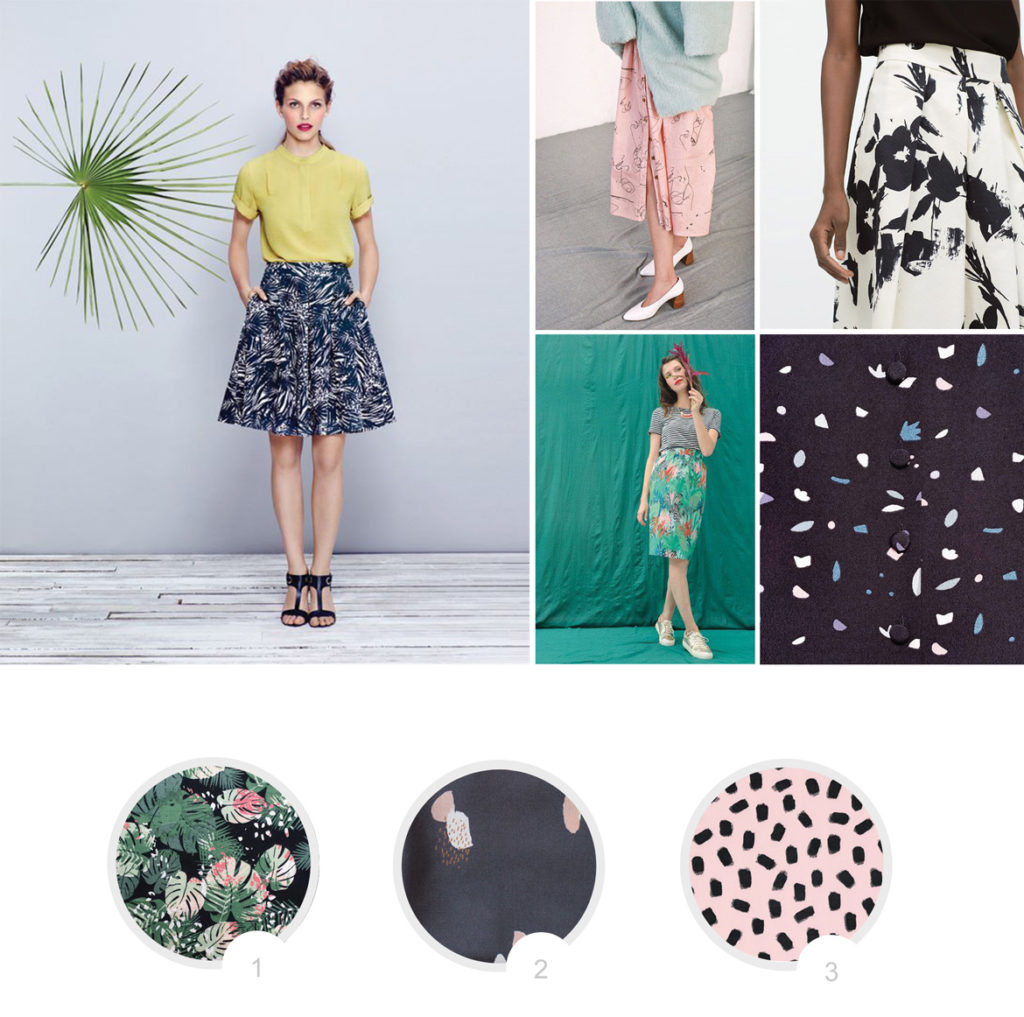
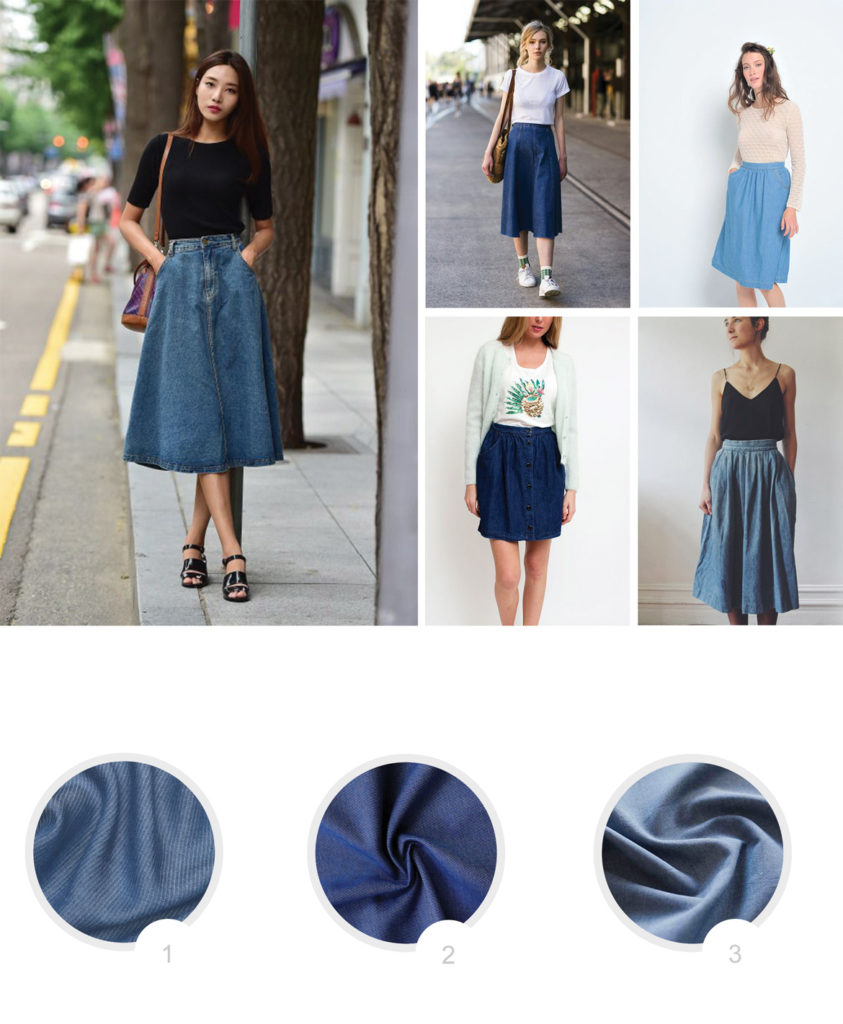
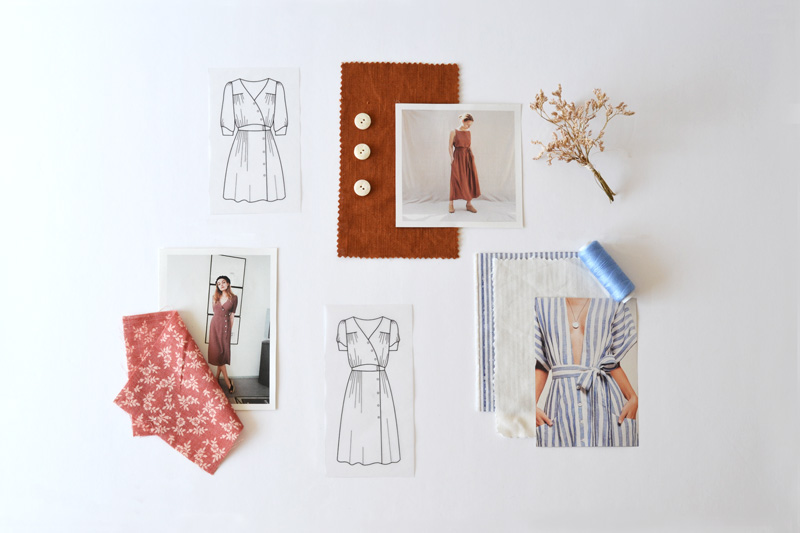
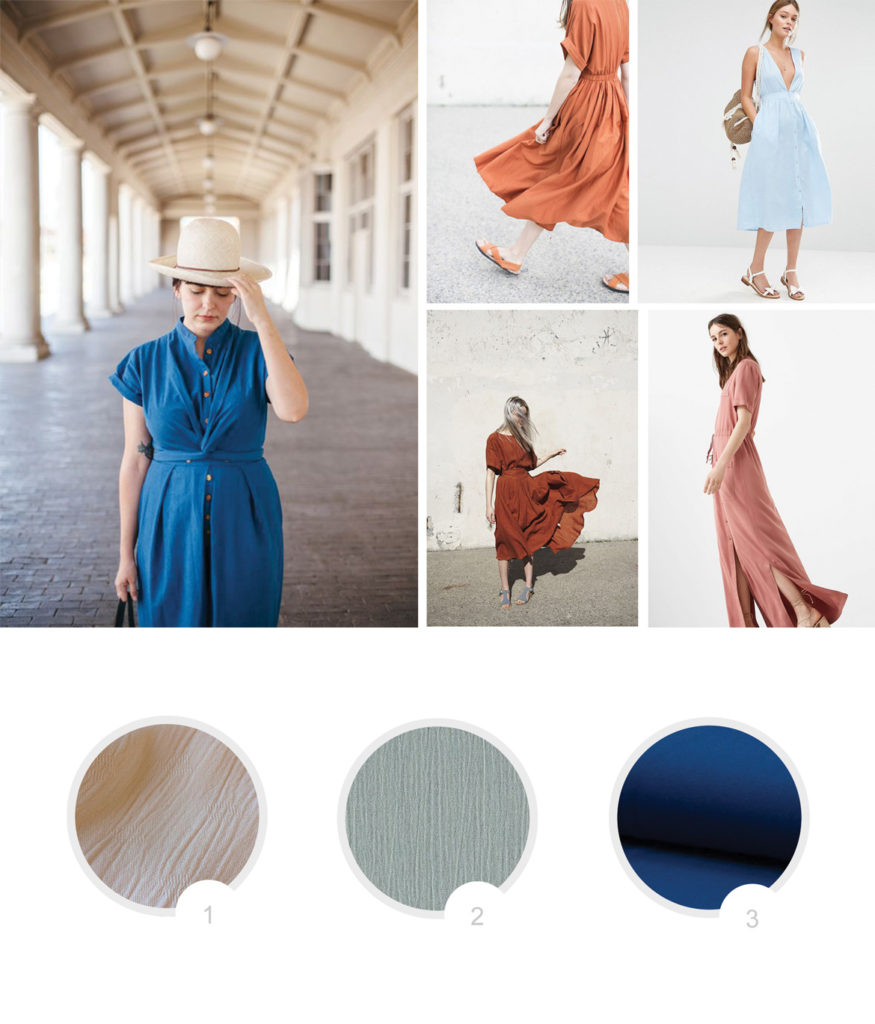
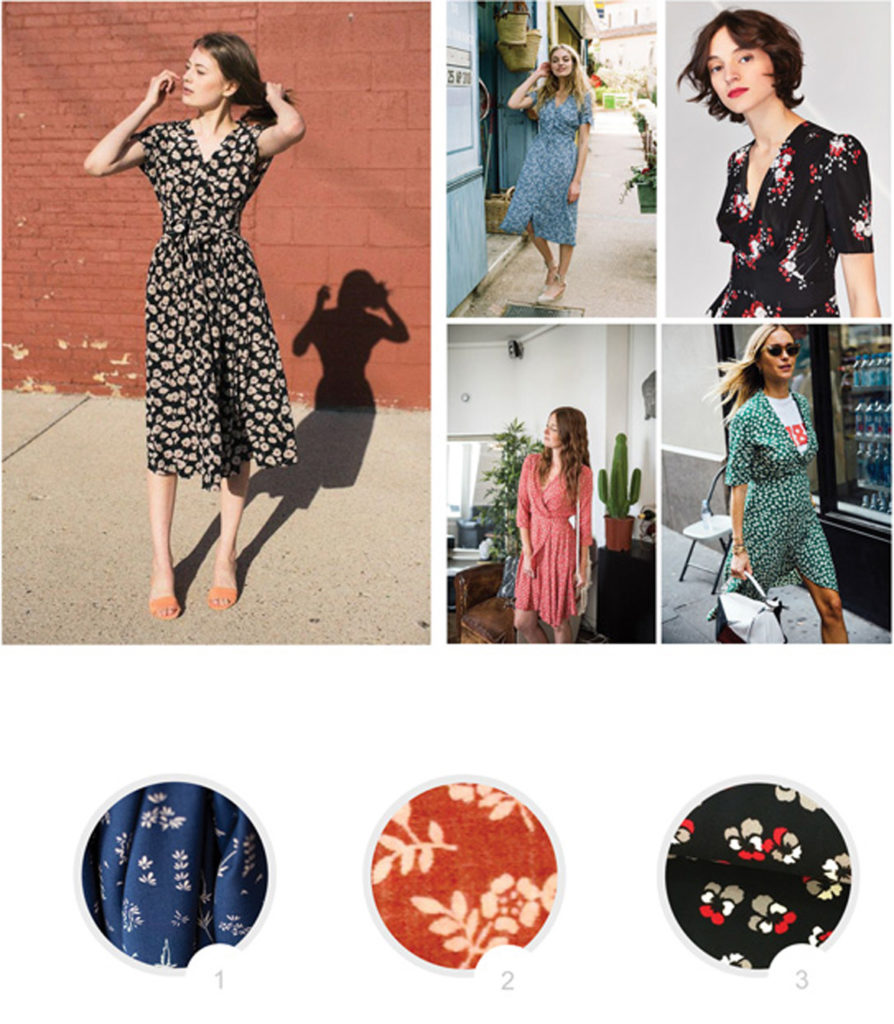
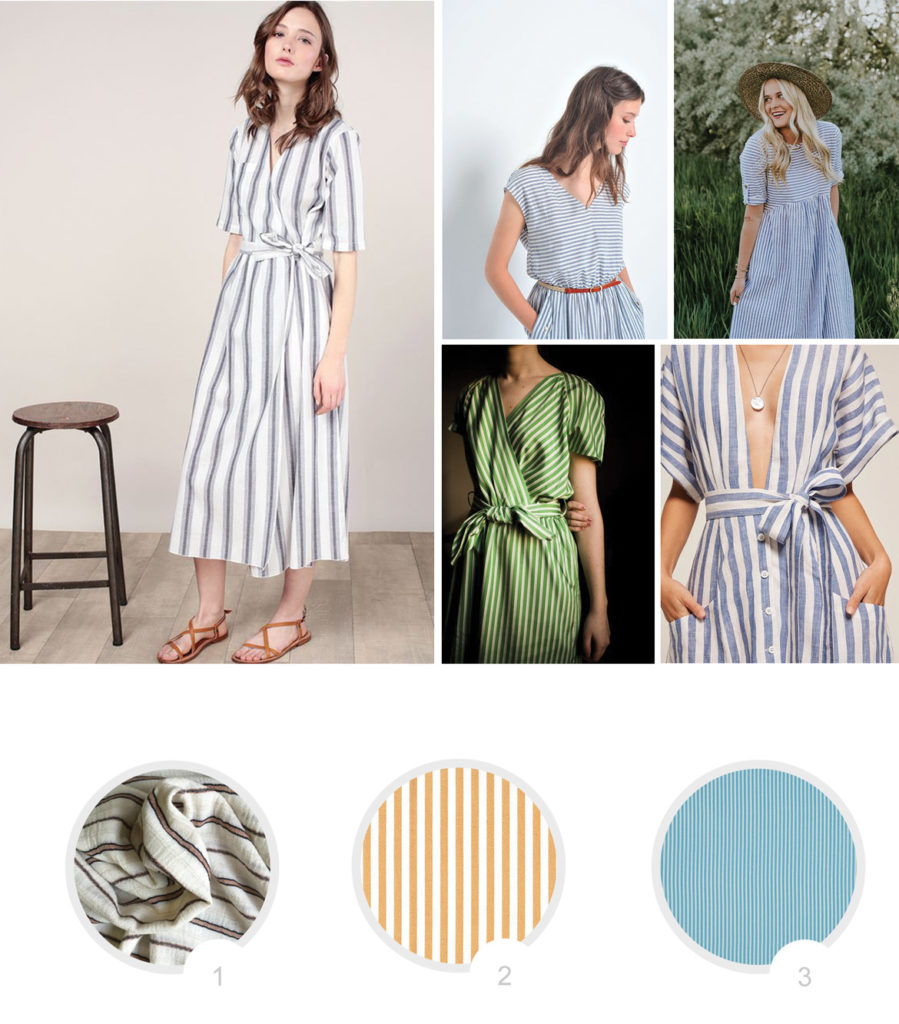
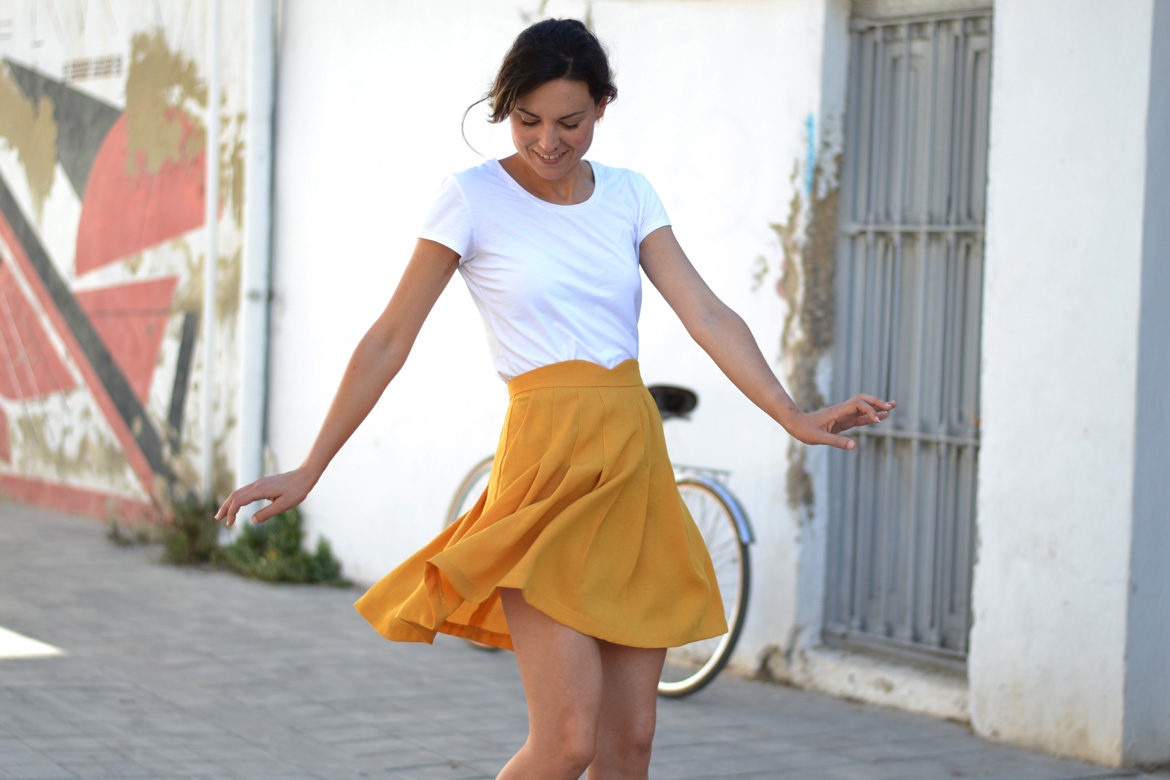
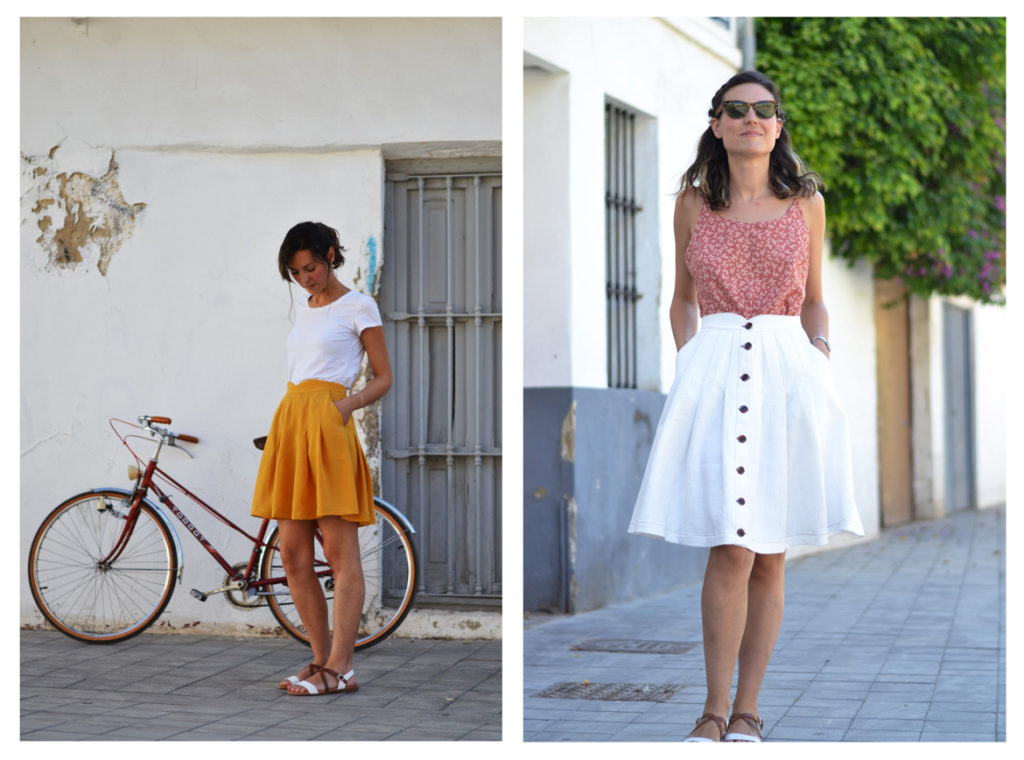
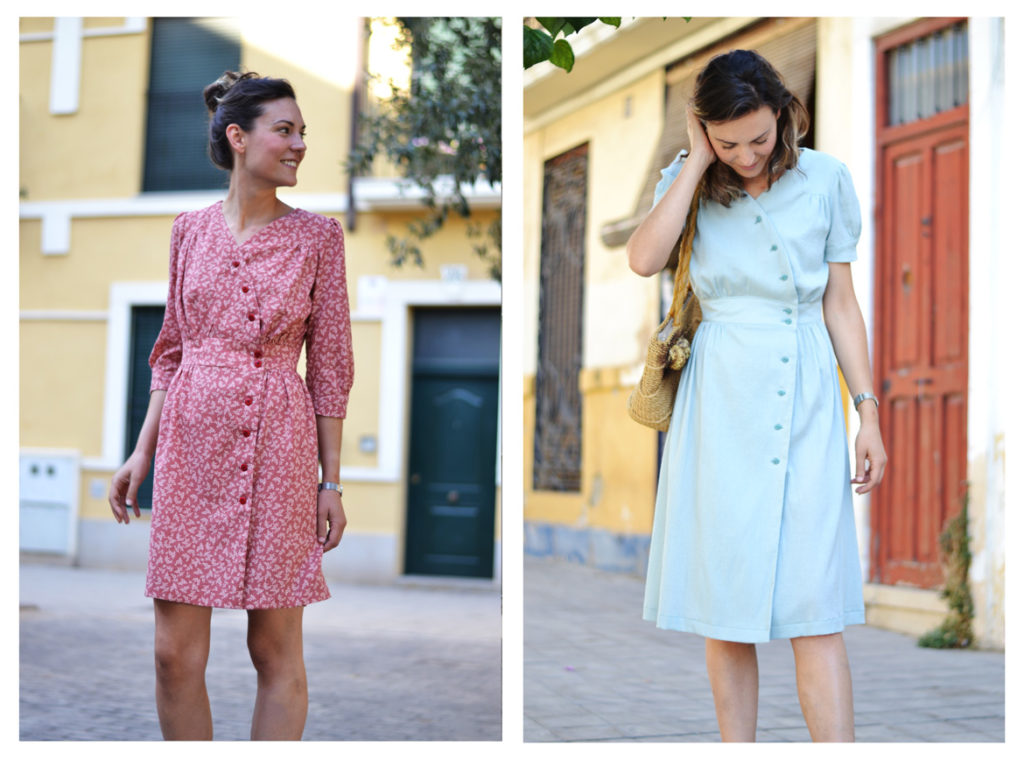
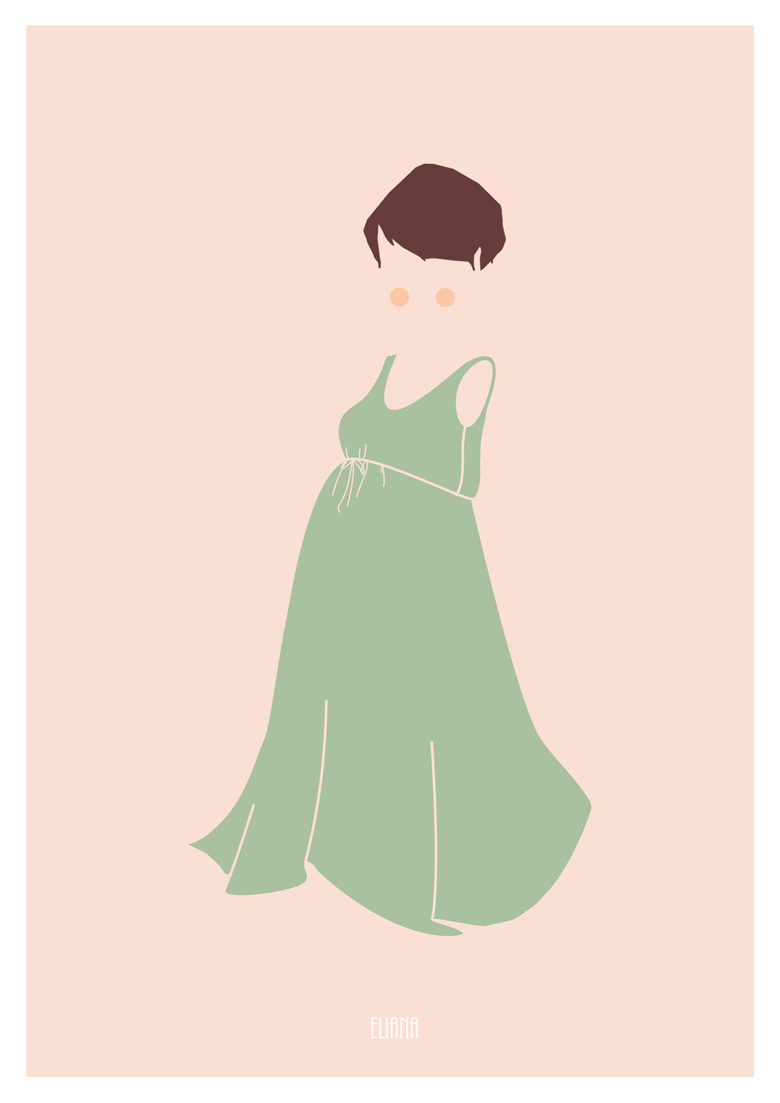
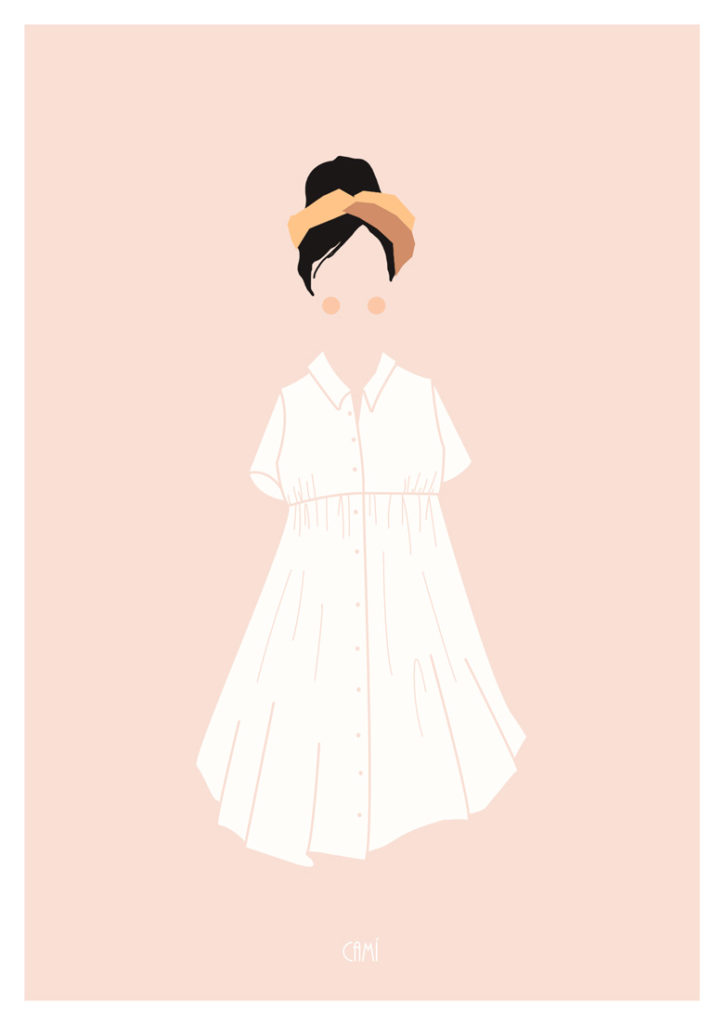
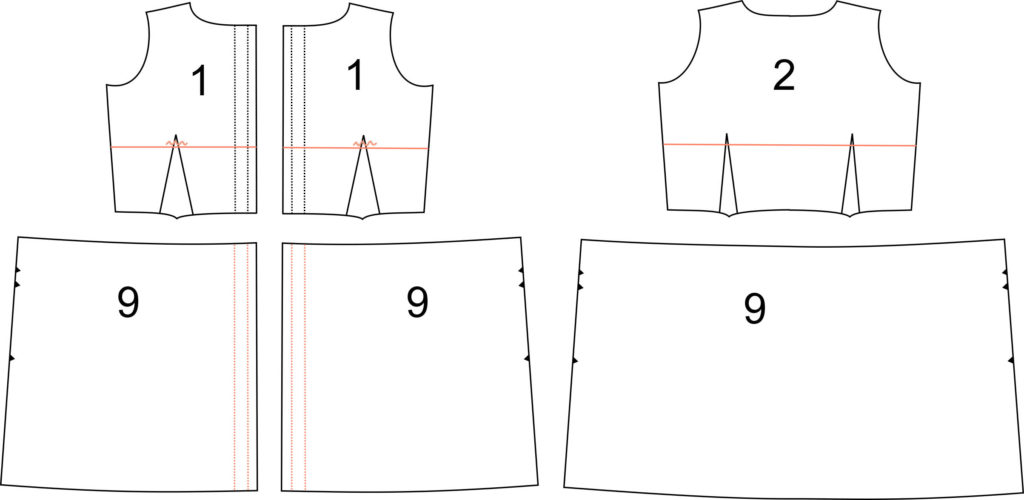 I would then remove the back darts and replace the front ones by gathers. To make the dress easier to put on, I would remove the side zipper and cut the front skirt piece in half and continue the bodice buttonband on the skirt. As the waistline is now under the bust, I would remove the pockets but they can also be lowered if you wish to keep them.
I would then remove the back darts and replace the front ones by gathers. To make the dress easier to put on, I would remove the side zipper and cut the front skirt piece in half and continue the bodice buttonband on the skirt. As the waistline is now under the bust, I would remove the pockets but they can also be lowered if you wish to keep them.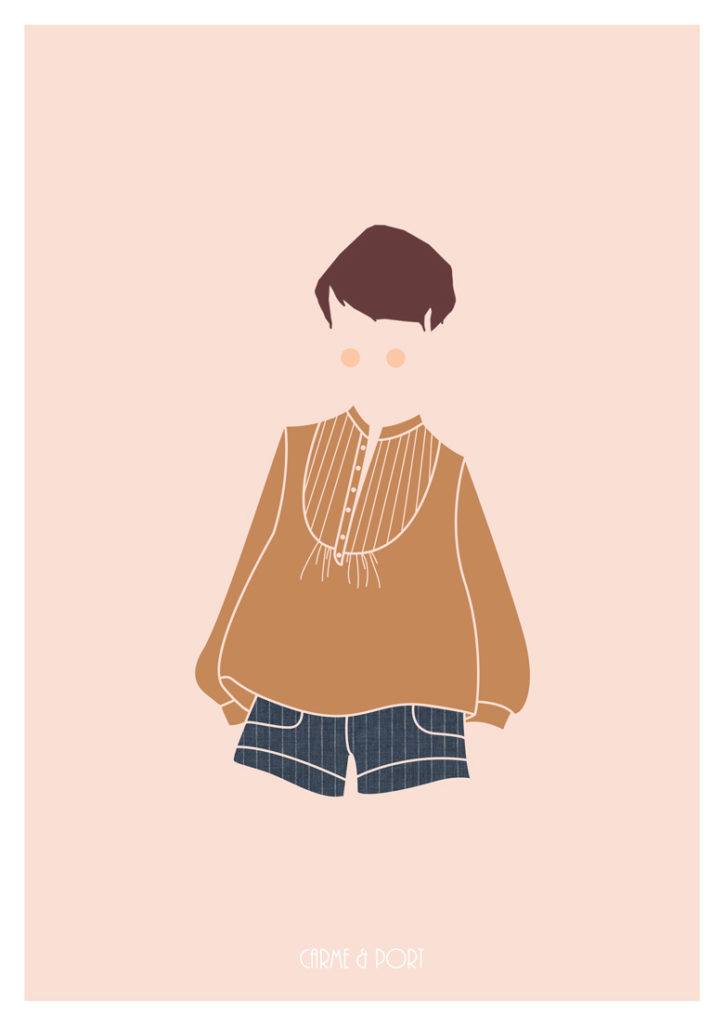
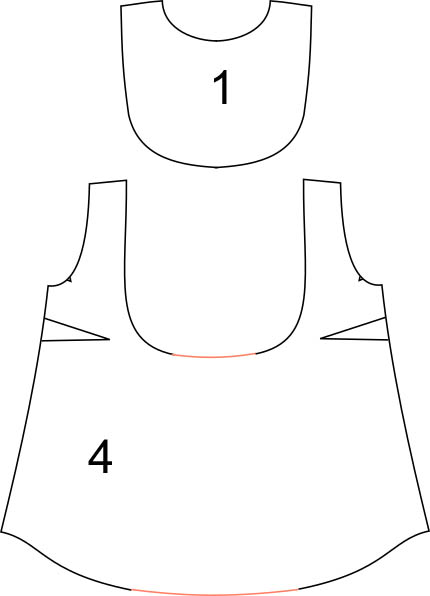 You just need to add fabric on the bodice centre front that will later be gathered and stitched to the front yoke as the original version.
You just need to add fabric on the bodice centre front that will later be gathered and stitched to the front yoke as the original version.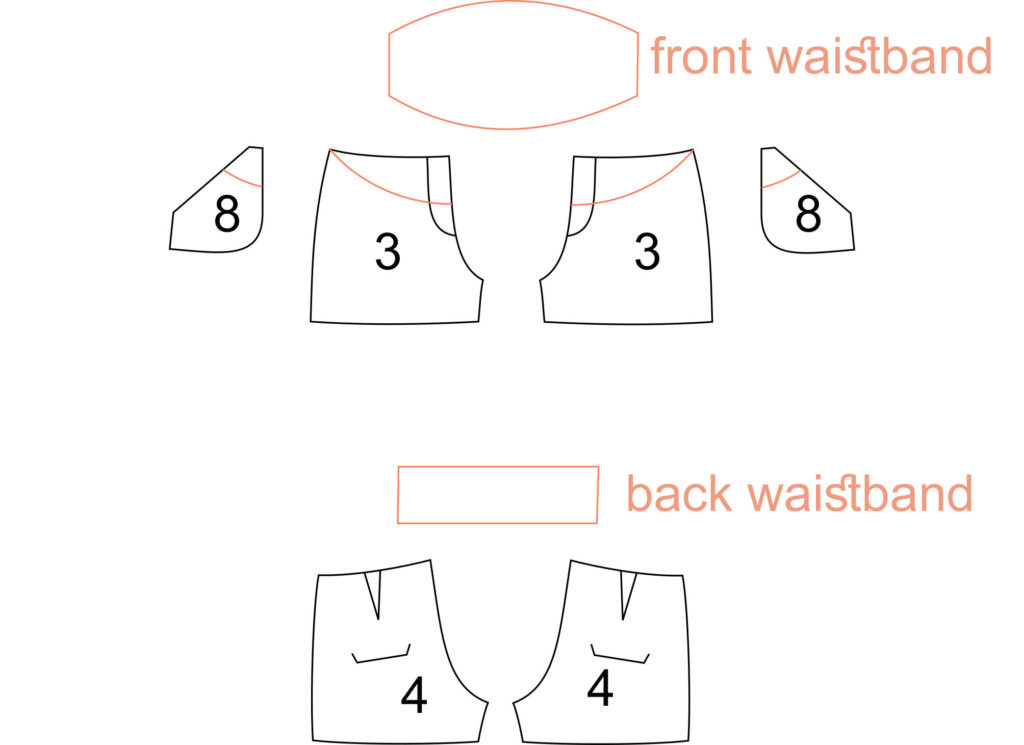
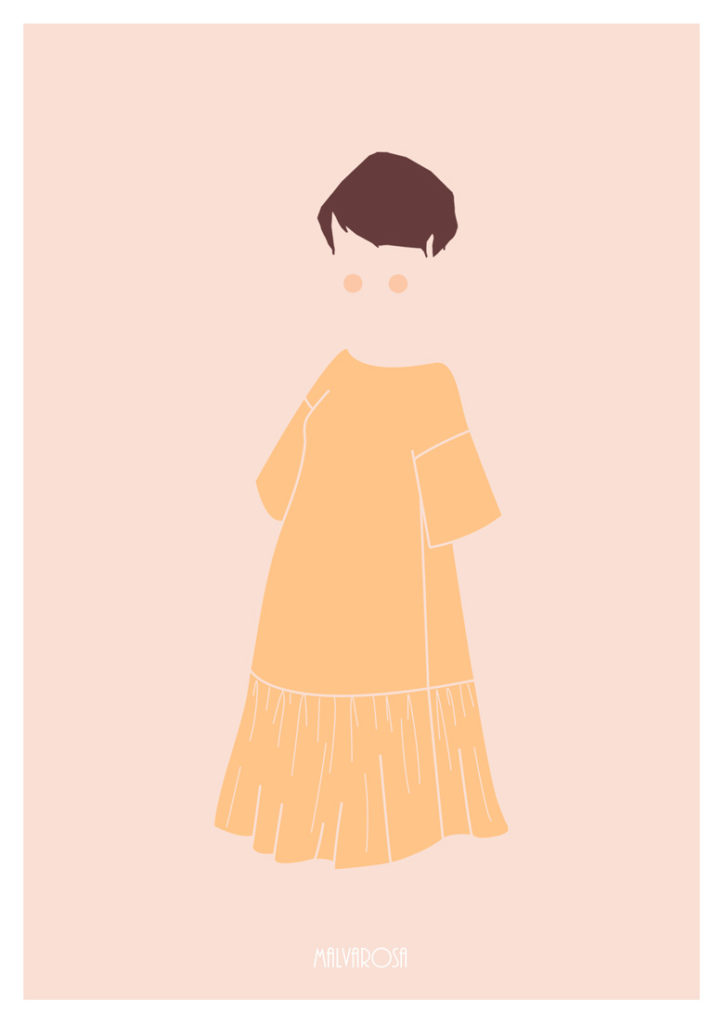
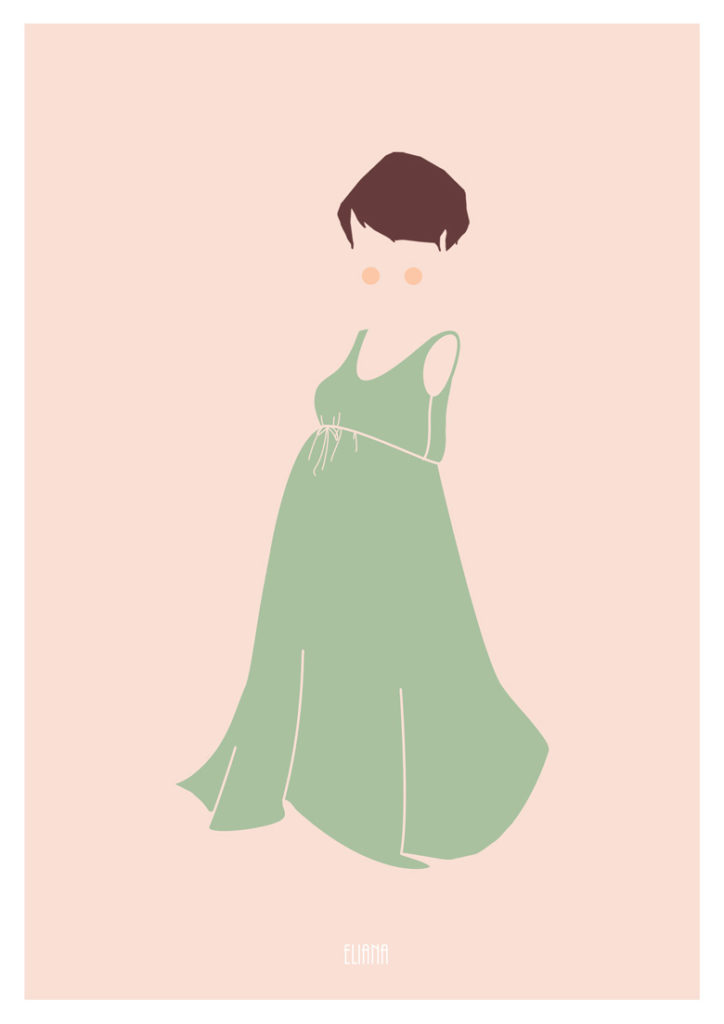
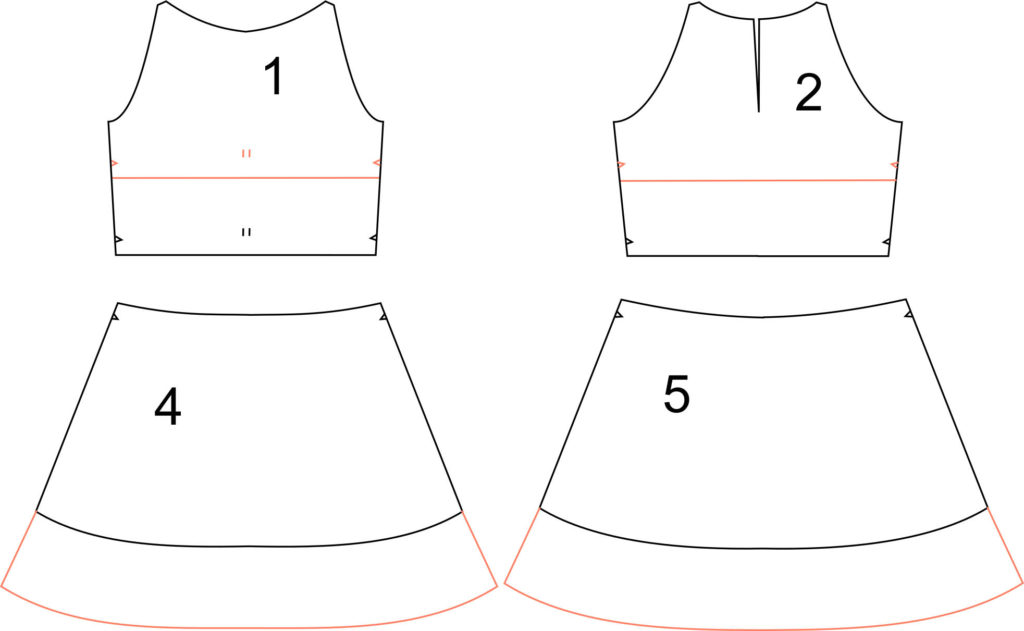 You need to shorten the
You need to shorten the 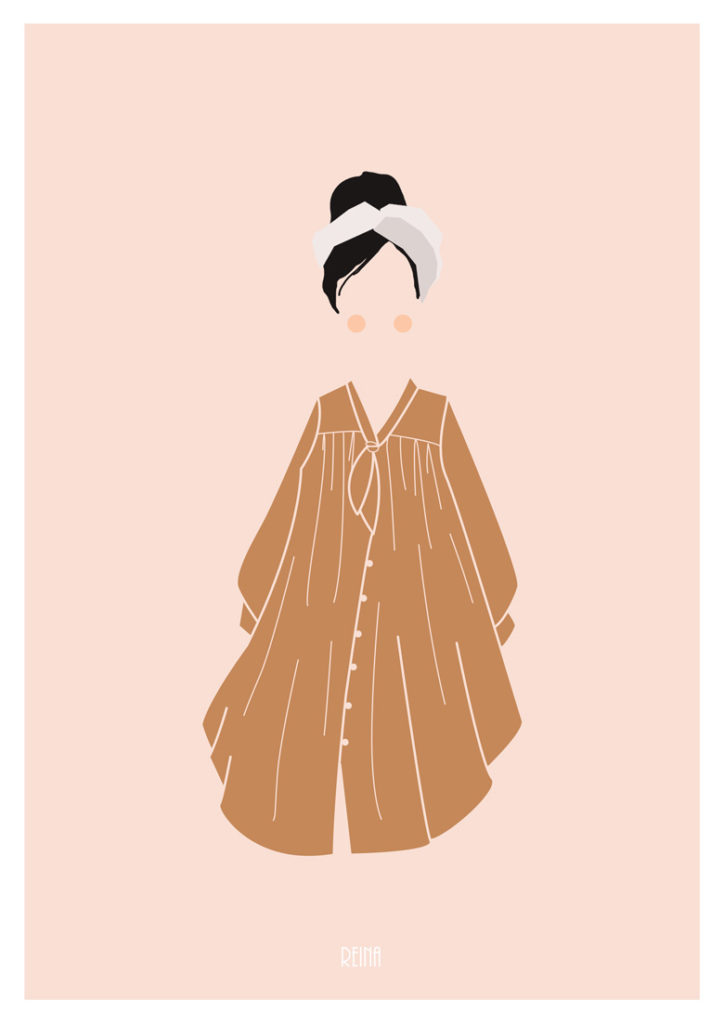
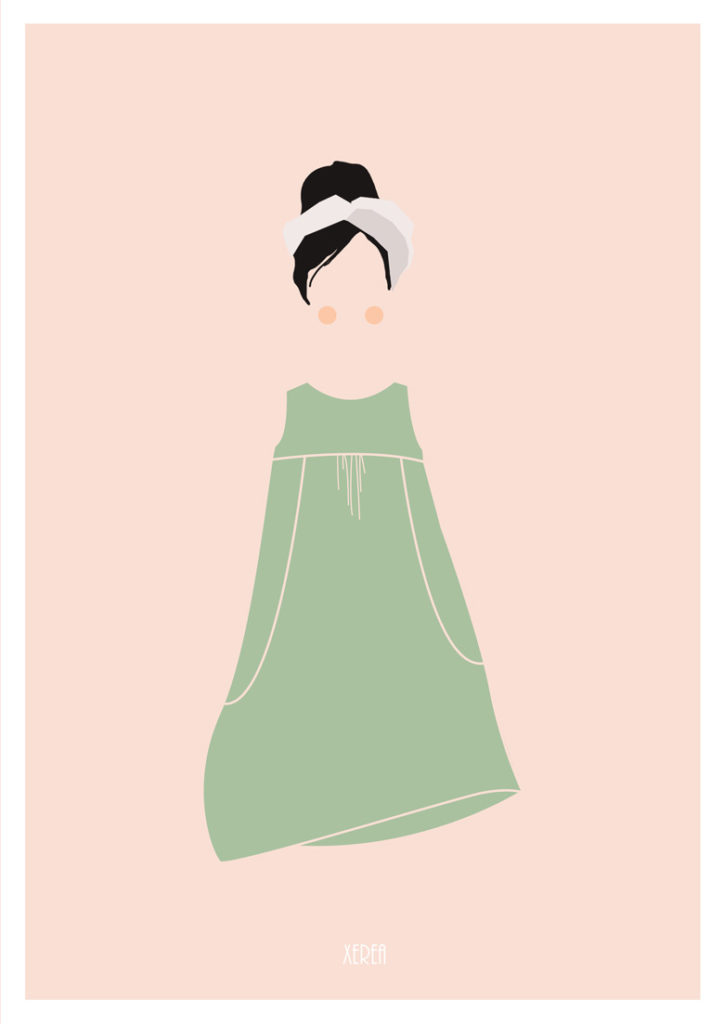
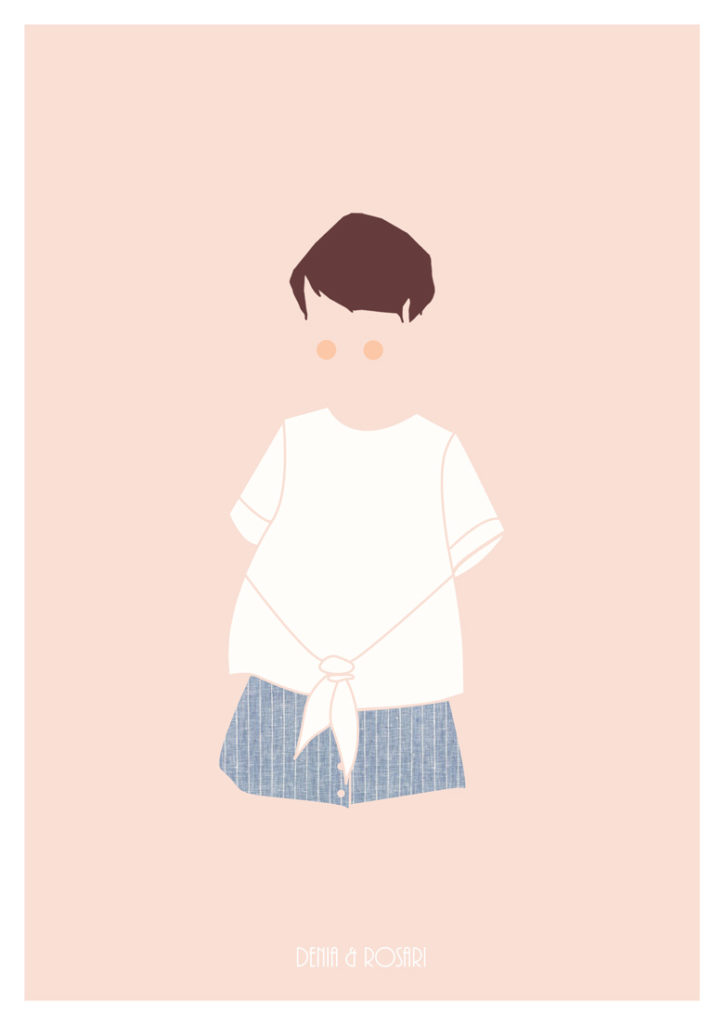
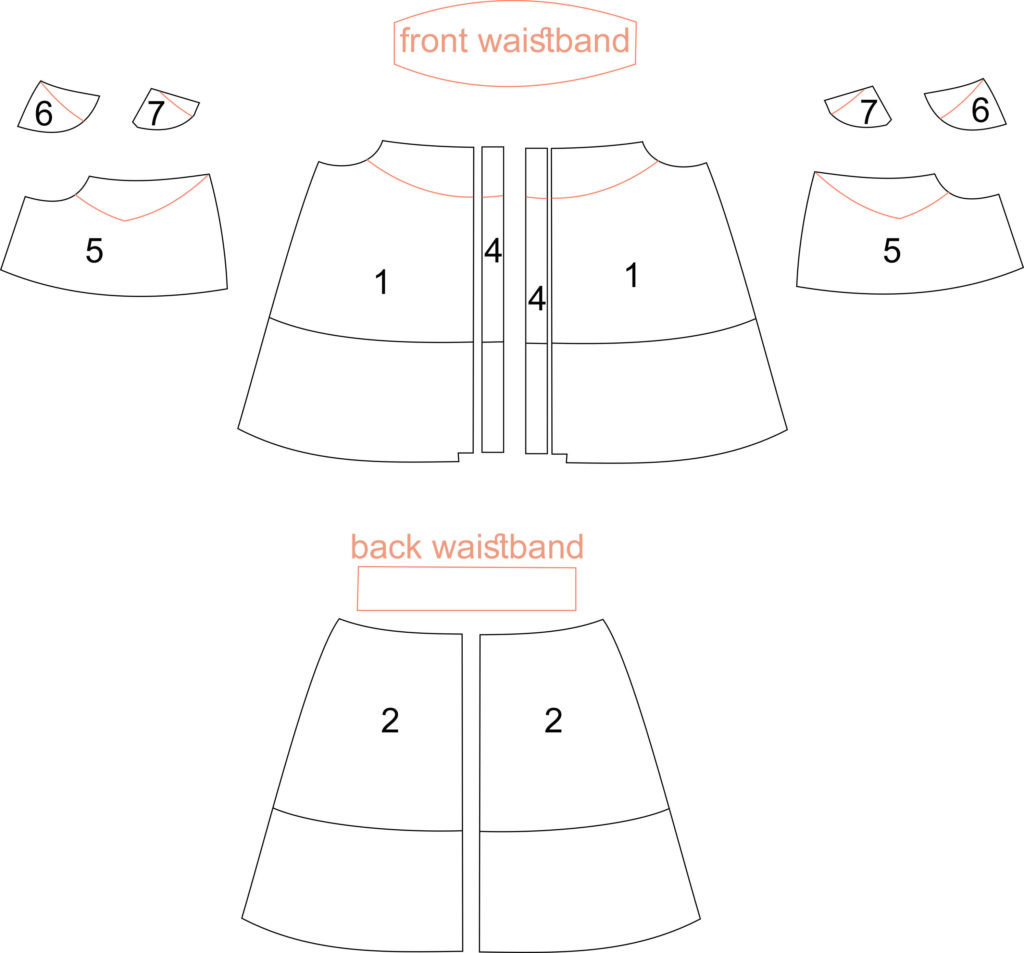 Check out the Port modifications above. You don’t need to make the buttonholes, as the skirt won’t be opened, you can stitch the buttons directly over the buttonbands. Pockets will nedd to be lowered slightly.
Check out the Port modifications above. You don’t need to make the buttonholes, as the skirt won’t be opened, you can stitch the buttons directly over the buttonbands. Pockets will nedd to be lowered slightly.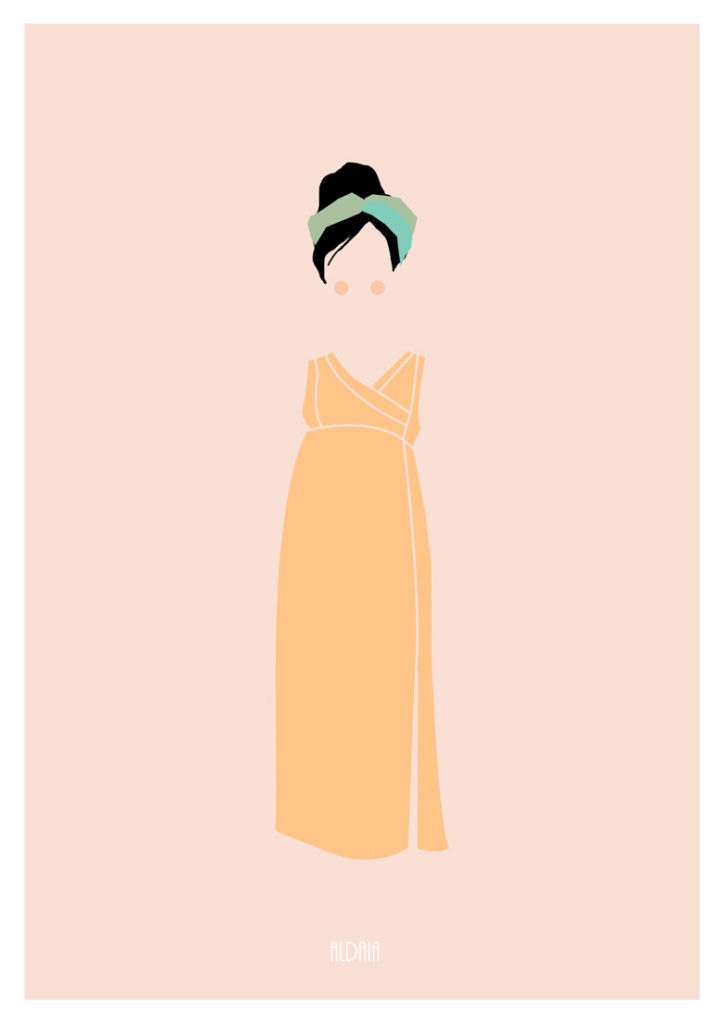
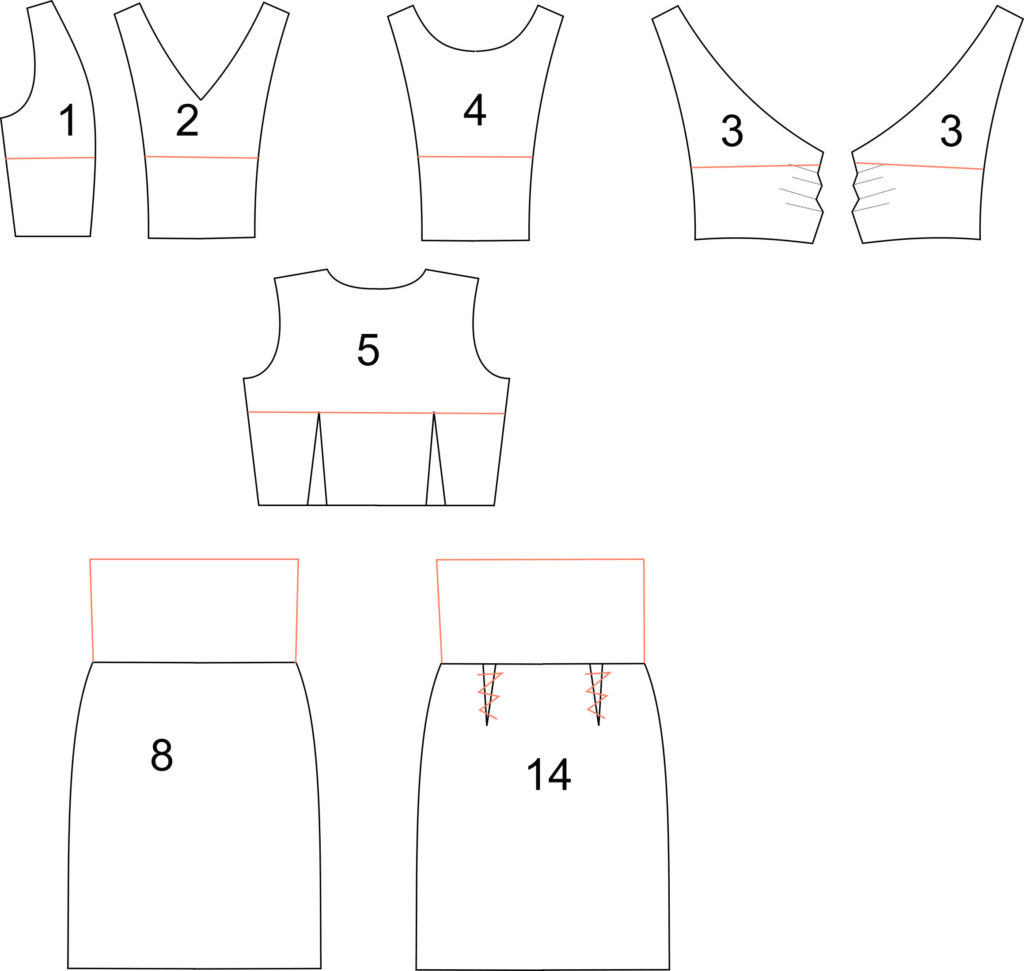 I would shorten the bodice pieces (all three views are compatibles) under the bust and remove the back darts. For the skirt, I recommand using view B, without seams, and lengthen the skirt at the waist. Make sure you choose a fabric with enough stretch ad why not add some soft gathers on the front around the waist?
I would shorten the bodice pieces (all three views are compatibles) under the bust and remove the back darts. For the skirt, I recommand using view B, without seams, and lengthen the skirt at the waist. Make sure you choose a fabric with enough stretch ad why not add some soft gathers on the front around the waist?